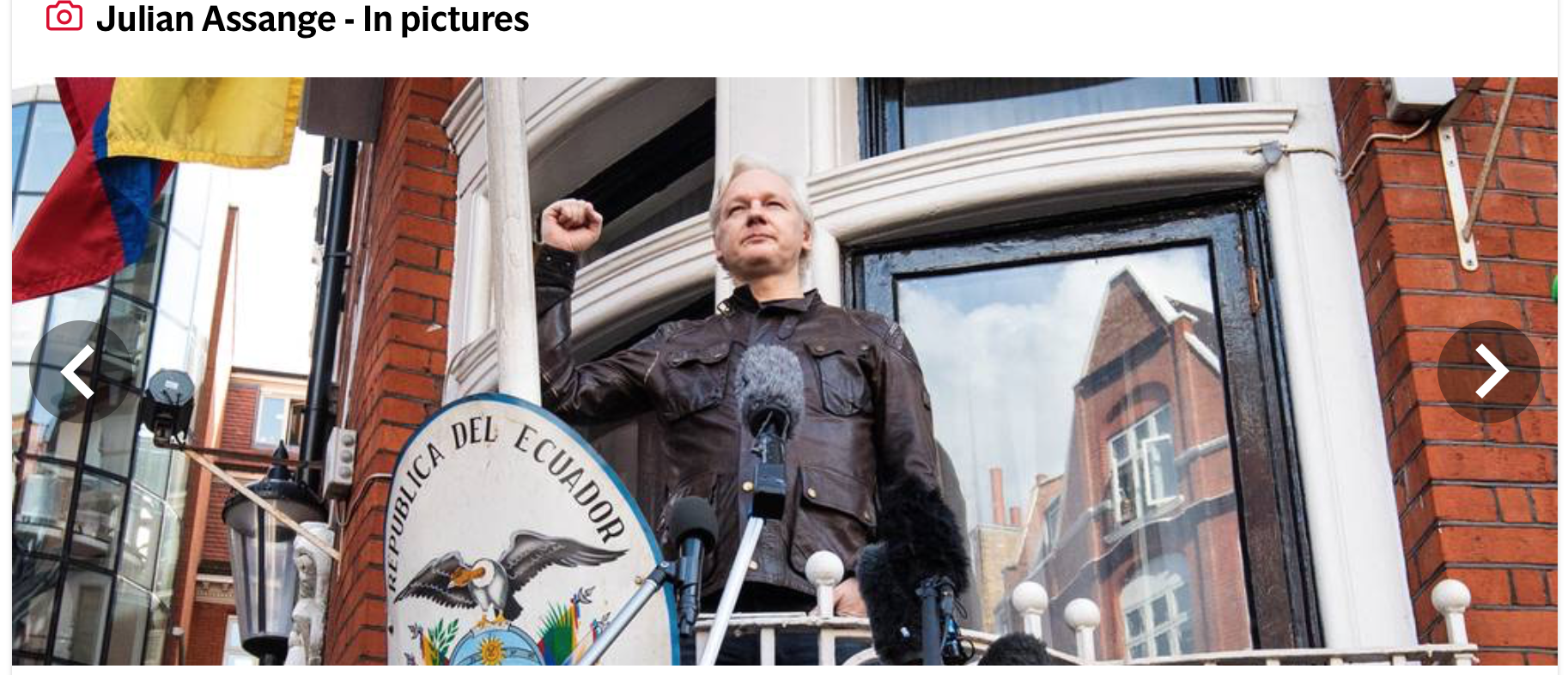
It has been six long years that Assange has been holed up in the Ecuadorian embassy in London.
I try to keep up with relevant world news and have for long been frustrated with the decay of free press in the English Language media across the world. This is not to say that non-non-English media is any better, judging from the Hindi and Bengali media from India. But, back to the topic, the destruction of free press in the west has been nothing short of breathtaking.
Free and independent press was touted as one of the principal pillars of democracy. It was supposed to help the citizenry informed and provide a restraint from Governments taking law into their own hands. Freedom meant a right to information, and a right to freedom of speech and expression. It was also seen as one of the fundamental inventions of western sociocultural transformation beyond the monarchy and feudalism of the medieval times.
Early post second world war decade was perhaps the best period for this utopian dream. It has since been just that – a distant dream.
The destruction of the main pillars of freedom and democracy started almost immediately after the war, although I personally was not born neither grown up enough to contemplate these issues till much later. After I had a chance to see and visit many parts of the world, and learn to look at things beyond the superficial, I began to suspect of a fundamental difference between my idea of freedom and democracy in the west, and the ground reality. This included the impending collapse of the global ecology – something that I was conscious of even back in my twenties, though I could not put my finger on it properly at the time.
It took me a while to understand that every single aspect of humanity, from its development to economic and social maturity and mankind’s march to modernism, were each responsible for driving a nail into the coffin of the planets living existence. Man, by merely being around – was killing this planet. It took me a while to understand that I along with my species represent the most toxic of all evolutionary misadventures that has occurred in the four billion year history of life on planet earth. It also made me convinced that there was no God. Had there been one, he would have made sure humans never happened.
But back to Julian Assange.
I am 99% certain that Julian was being hounded because the western world does need whistleblowers any more. It stopped nurturing freedom of speech, and stopped promoting a functioning democracy, though it continues to wear a mask to fool the unwary.
The Medusa responsible for the death of freedom was USA itself which dragged all its lackeys such as the UK, Canada, Australia, India and all other countries where English was one of the primary working languages. Along with them came the non-english progressive western nations such as Germany, France etc. These nations lead by the US strangled democracy and freedom.
What we now have is a belligerent fascism masquerading as a just and free conglomeration of societies.
I became aware that watching TV was a waste of time if one wanted to get real news. I stopped watching TV almost 15 years ago. I slowly stopped reading mainstream media such as the New York Times, Washington Post, or CBC, and started looking for fringe news sources on the internet. I temporarily dallied with Amy Goodman and other sources. I read up people like Noam Chomsky or Chris Hedges. I started checking on Aljazeera and RT.
I first started suspecting that google search engine was being tampered to skew the results in favour of state supported political propaganda and against free speech. I started testing google and eventually not only confirmed it, but got outraged by its one sided depiction of reality.
I found my friends, particularly the westernized, anglicized, upwardly mobile people from India that had either already migrated to the west and held good jobs, or were dreaming about doing so, were far more subverted to a false facade of western propaganda and the assumption that the west represented real freedom and that the US was among the best nations because of blah blah blah, than many thoughtful Americans themselves. The new immigrant pals of mine had become more American than Americans. Many of them cannot read nor write their mother tongue any more, and have an extremely shallow and narrow outlook to existence, despite being highly educated in the conventional sense. This also makes me question the definition, value, and purpose of education.
Mentally, I started drifting away from them. Today most of them appear like specs on the horizon, without shape, colour, or form. This increasing loneliness is part of the background of my somewhat singular journey into activism against agro-toxins in general and glyphosate in particular – which lead to me attempting to write a book titled – Lonely Road.
I acquired many new friends that have no blood link with India. Many are also like flotsam and jetsam – passing by in the current. But there are, I am happy not note, real deep thinkers too, who refuse to be indoctrinated by propaganda – western or otherwise, and have the depth of perception and the courage, to call a spade a spade.
Julian Assange just happens to be an icon for many such individuals, a floating log in floodwaters that is washing away our notion of a just world.
I decided to write a chapter on Julian Assange because he represented, in a modern day version of the epic of paradise lost – where we lose our conviction about man’s greatness. I am aware that the term man is used both to represent a male human and also the species homo-sapiens-sapiens – something that the feminist movement has reason not to be happy about. In my own mother tongue, Bengali, the name for a human is used to describe human civilization, while the term for ‘man’ is exclusively used only to represent a male and not the species.
Anyhow, this chapter about Julian Assange, was, for me, about more than just Julian. It was about my realization and coming to terms with the loss of our psychological paradise brought about by ourselves being ourselves, and how our own genes might be the worst enemy of the planet. Man, by his genetically programmed drive to use technology to better his life, is the ultimate doomsday weapon unleashed on earth.
And amidst all that, we learned, unlearned and then again re-discovered, the art of killing our messengers, feathering and tarnishing our torch bearers, and crucifying our prophets.
I have no idea how Julian Assange will be remembered by history. I do not much care about public perception at this stage. But Julian has been a good pointer, a symptom, by which to contemplate the deep cancer within our society that has been brought about by the very institutions that were to be the pillars of our modern civilization. He is the messenger that the world today wishes to be silenced. His messages, usually second hand and originating from someplace else, which makes him a messenger to start with, represents truth that is no longer cherished by the ex-pillars of modern democracy.
This new age fascism pretending to be an incarnation of capitalism controls all media. Its propaganda machine puts the Stalinist era Soviet propaganda machine to shame. Doctored news turns night into day. People are put away in prison by the tens of thousands without trial, and keys being thrown away. USA tries to prove it is the leader of the free world, by placing an unbelievable number of its own citizens behind bars without trial. People across the planet, killed by faceless drones operated by secret US establishments without any pretence for justification or judicial oversight is commonplace and near daily occurrence across the globe.
Honest scientists are being fired, and prevented from speaking out the truth without political clearance. Honest whistleblowers that expose the Governments illegal spying on its own people and extrajudicial killings of foreigners are either arrested and put away for years in jail, or have to run in fear of life and take refuge in countries like Russia, to save themselves from persecution for speaking the truth about their own Government’s wrongdoings. And the citizens of such “freedom loving” nations remain silent while the few brave torchbearers of the same freedom are silence or have to run away. The worst things we feared about communism has come true under this new age capitalism.
In Hindu mythology, there is mention of four eras that repeat themselves cyclically. The first era was Satya Yuga or the era when four out of four spoke the truth. Stay stands fro truth and Yuga stands for era. There were no liars. This is as close to heaven as one can get while on earth.
Then starts the downward slide. In the second phase, three out of four are truthful and one is a liar. This is the Treta Yuga. “Treta” means three. Hell lurks in the corner and threatens to disrupt normalcy and tranquility in this phase.
Then comes the next phase where two truth speakers are pitted against two liars. This is the “Dwapar Yuga”. “Dwapar” means two. World begins to lose its balance. It gets near impossible to figure out what is right and what is wrong. Confusion reigns supreme. Only the most contemplative and wary can navigate through this world on a just path.
The last phase is the beginning of hell – “Kali Yuga”. This is the current age, with one quarter virtue and three quarter sin. In Sanskrit Kali may represent a number of unpleasant items – conflict, discord, turmoil. It also represents the Goddess of “time” which in turn invites the end of time, and hence the beginning of a new cycle and a new calendar. In this current era, crooks rule the world. Doomsday is here. Living hell is ongoing right now. An all consuming catastrophe, stylized by the arrival of an angry Lord Shiva to burn everything, thus cleansing the planet with fire, and set the stage for the new cycle, starting with another golden age of peace, happiness and tranquility.
Thus continues the never ending cycle of time and events.
Intriguing as this tale is, we already know that a repeat cycle on planet earth is unlikely. Should life disappear from the planet, or should all higher animals go extinct, which is very possible since we are already in the midst of a man-made sixth mass extinction phase, a side effect of the “Kali Yuga” lead turmoil, then there may not be enough time left on the life span of planet earth, which in turn is dependent on the lifespan of our sun, for new life forms to start from near scratch and then evolve enough to come to higher intelligence animals like ourselves. The planet is likely going to be uninhabitable in the next phase, as our sun consumes most of its hydrogen, and begins to expand and die. The sun is not large enough to generate the kind of gravitational pressure and temperature at its core, to fuse heavier elements than hydrogen. As a result, the sun itself is not going to have any “phase two” existence like other larger stars. Solar system dies when the sun dies. Bet even before than happens, the expanding and exploding sun would consume all near planets, including planet earth.
So, Hindu mythology or not, man had only one chance on earth. And man blew it. That, far as I can tell, is the long and short of it.
Meanwhile Julian reportedly resigned from his post as the editor of Wikileaks.
If this is true, it hardly appeared in any news outlet. There are speculations that the Russians might have hatched an aborted plan to ferret Julian out of the Ecuadorian embassy and into freedom in Russia. There are other news clippings that indicate possibility that New Zealand might offer asylum to Assange. There are more news clippings suggesting Ecuador might have given Julian citizenship and turn him into an Ecuadorian diplomat (with diplomatic immunity ?), and assign him on a political post in Ecuadorian Embassy in Moscow. There are more news, almost all fo them from no-name outlets. One claims there are efforts to have him extradited into USA only to offer information on Hillary Clinton’s wrongdoings, before letting him go and that president Trump of his son-in-law might be behind it. Another one claims that the US might offer assurance that they don’t want Assange extradited, in which case the UK government might just let him go after he pays a fine and spends a symbolic few days in jail for jumping bail.
All of these might be speculation.
But most of my close friends and relatives – especially those ultra-modern americanized converts – that have successfully been reprogrammed to think Putin to be the biggest rogue these days and that the US is basically pure as driven snow – are at a psychological plain of falsehood that I find increasingly painful to visit. The specks in the horizon keeps getting smaller, merge into each other and begin to disappear in the mist.
Was a time when I thought the US to be one place where rule of law worked, and one was presumed innocent unless proven guilty. However, the US government has long been engaged in assassination of people without trial, including assassination of heads of state, many democratically elected, without ever acknowledging their role nor apologizing or explaining to their own people, why they conduct such extra-judicial killings or dethronement of other nations heads and topple their Governments. What kind of law allows that?
I do not bother asking these questions to my “Americanized” ethnic brothers and sisters. I realize these questions by now are outside of their field of perception. They are incapable of comprehending them. In any case, it is pointless for me to try to have a meaningful conversation with any of them.
Essentially, I was destined to be on my lonely road. Freedom of thought and freedom of thinking comes with a price tag – it ensures you are likely to be lonely. It is not a bad thing. Much better than living in a din where you cannot even hear yourself, are hemmed in by state sponsored propaganda and reprogrammed humanoids that should have been free thinking humans. Before you realize, you have surrendered the one thing that is supposed to set a human apart – ability conduct independent analysis of what is happening around.
And thus, I decided I would add a chapter on Julian Assange. This overlaps with my notion on activism and the fact that the road essentially has to be lonely. There is no other way.
This is the primer of the chapter. The rest should be in the book.

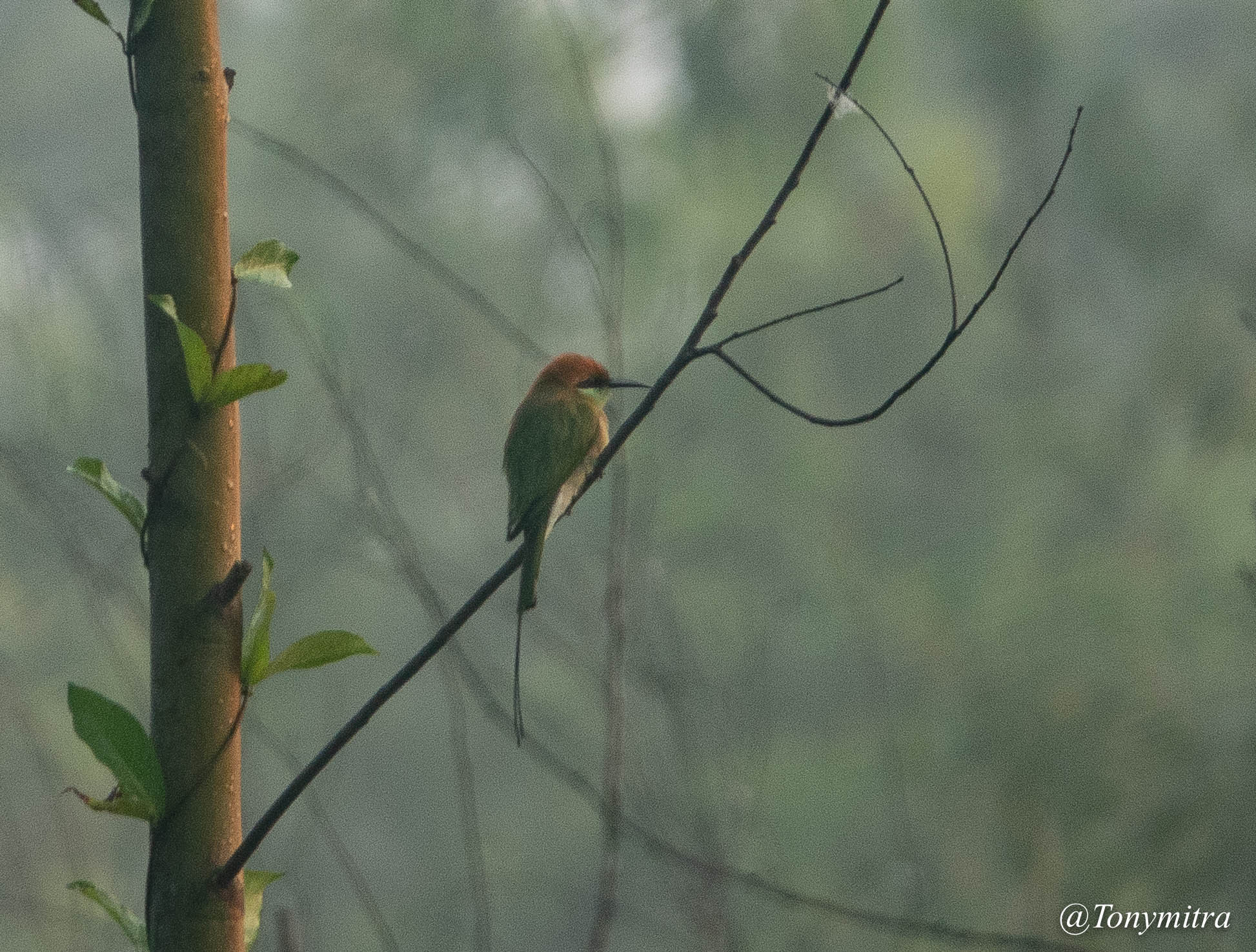
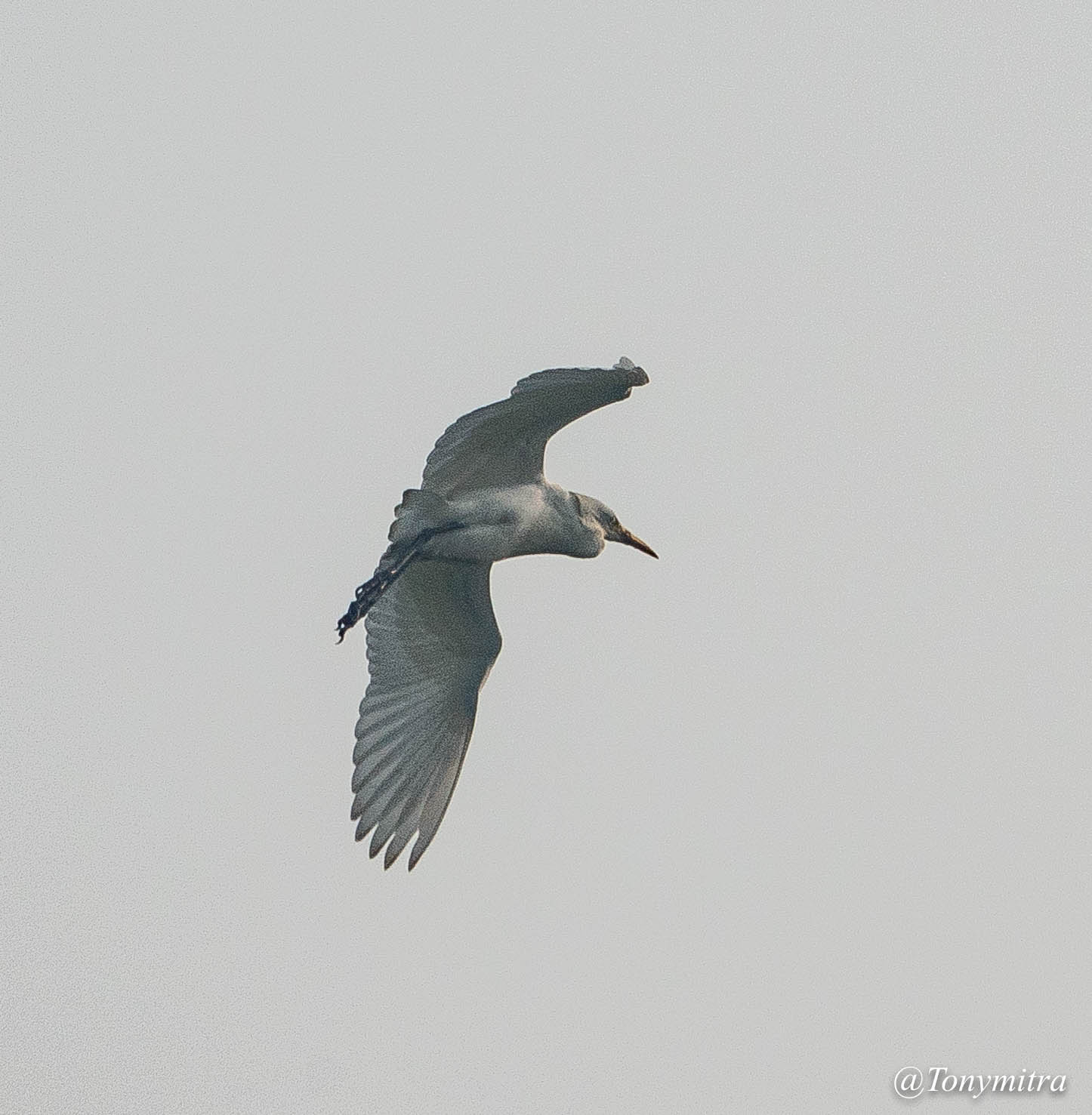 I do not see hope in a horizon dominated by sky scrapers, our paths dominated by automobiles and our society sprinkled with politicians that betray their constituents and advanced nations ruled by warlords.
I do not see hope in a horizon dominated by sky scrapers, our paths dominated by automobiles and our society sprinkled with politicians that betray their constituents and advanced nations ruled by warlords.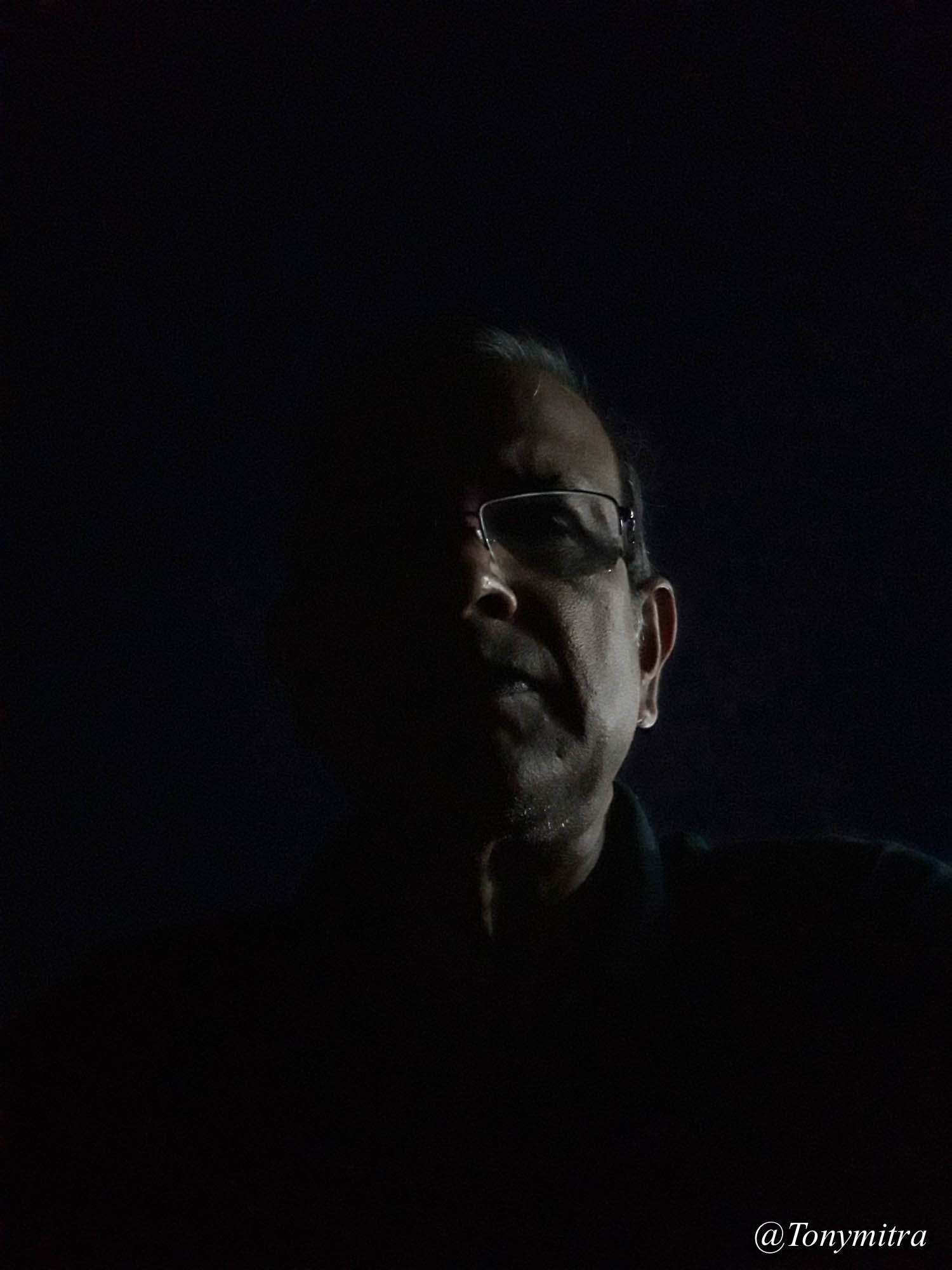 Perhaps it is in the mitochondrial DNA that we might have inherited from the microbial world and could not genetically digest properly. Perhaps this is what the old sages meant – about creation being the flip side of destruction and that the universe is forever is a duel dance of creation and destruction.
Perhaps it is in the mitochondrial DNA that we might have inherited from the microbial world and could not genetically digest properly. Perhaps this is what the old sages meant – about creation being the flip side of destruction and that the universe is forever is a duel dance of creation and destruction.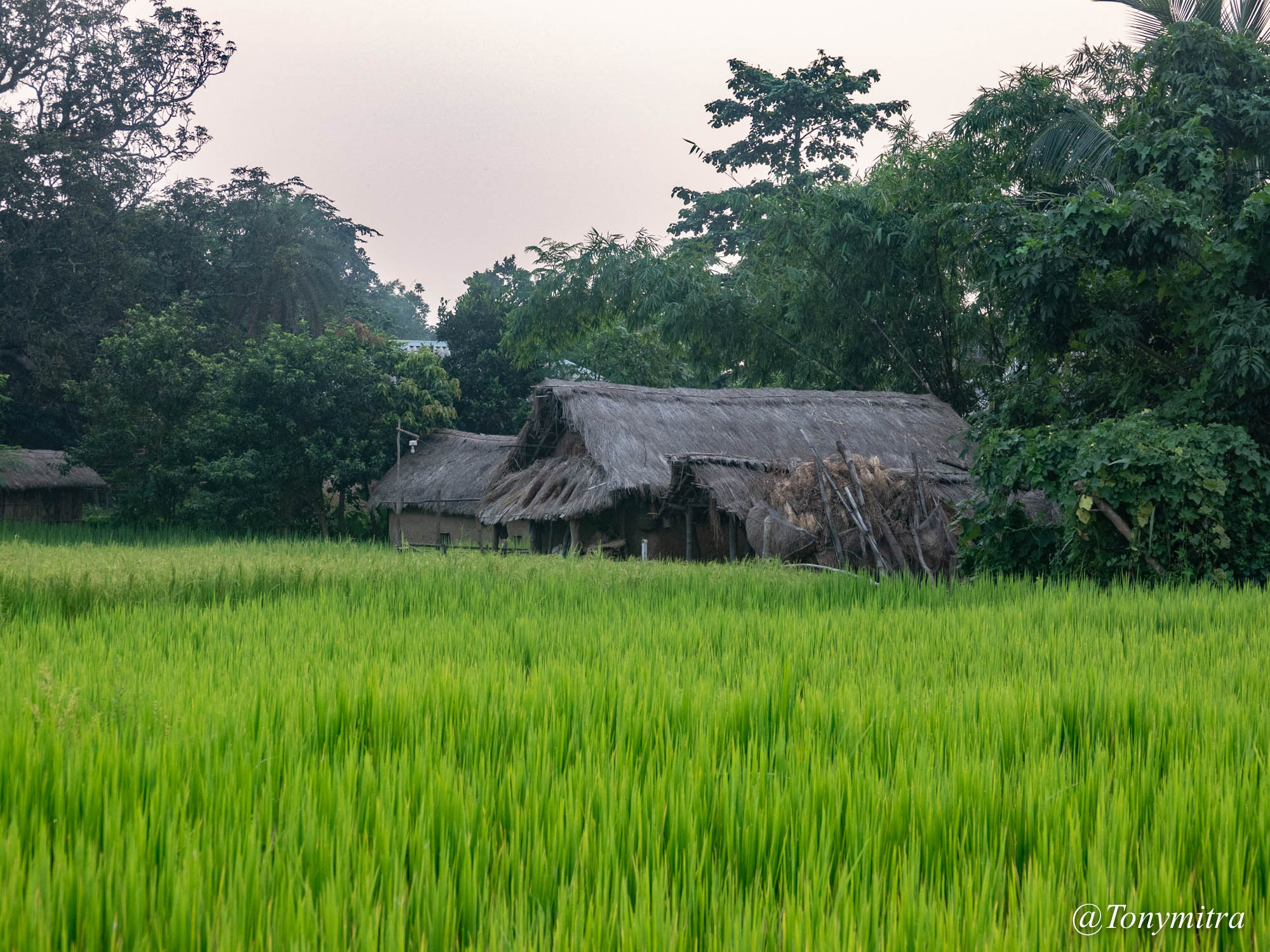 I had already turned a non-believer of raising awareness. I had lost faith in speaking with people. I had come to believe that – should there is a need to do something to help the society, one should try to do what one can by one’s own self, without ever expecting anybody to help. There is no value in trying to muster public support, or raising awareness. People thus made aware simply take selfie pictures with you, clap hands, and go back to sleep. Therefore, if I am driven by wanting to do something, I either do it myself, or it wont get done.
I had already turned a non-believer of raising awareness. I had lost faith in speaking with people. I had come to believe that – should there is a need to do something to help the society, one should try to do what one can by one’s own self, without ever expecting anybody to help. There is no value in trying to muster public support, or raising awareness. People thus made aware simply take selfie pictures with you, clap hands, and go back to sleep. Therefore, if I am driven by wanting to do something, I either do it myself, or it wont get done.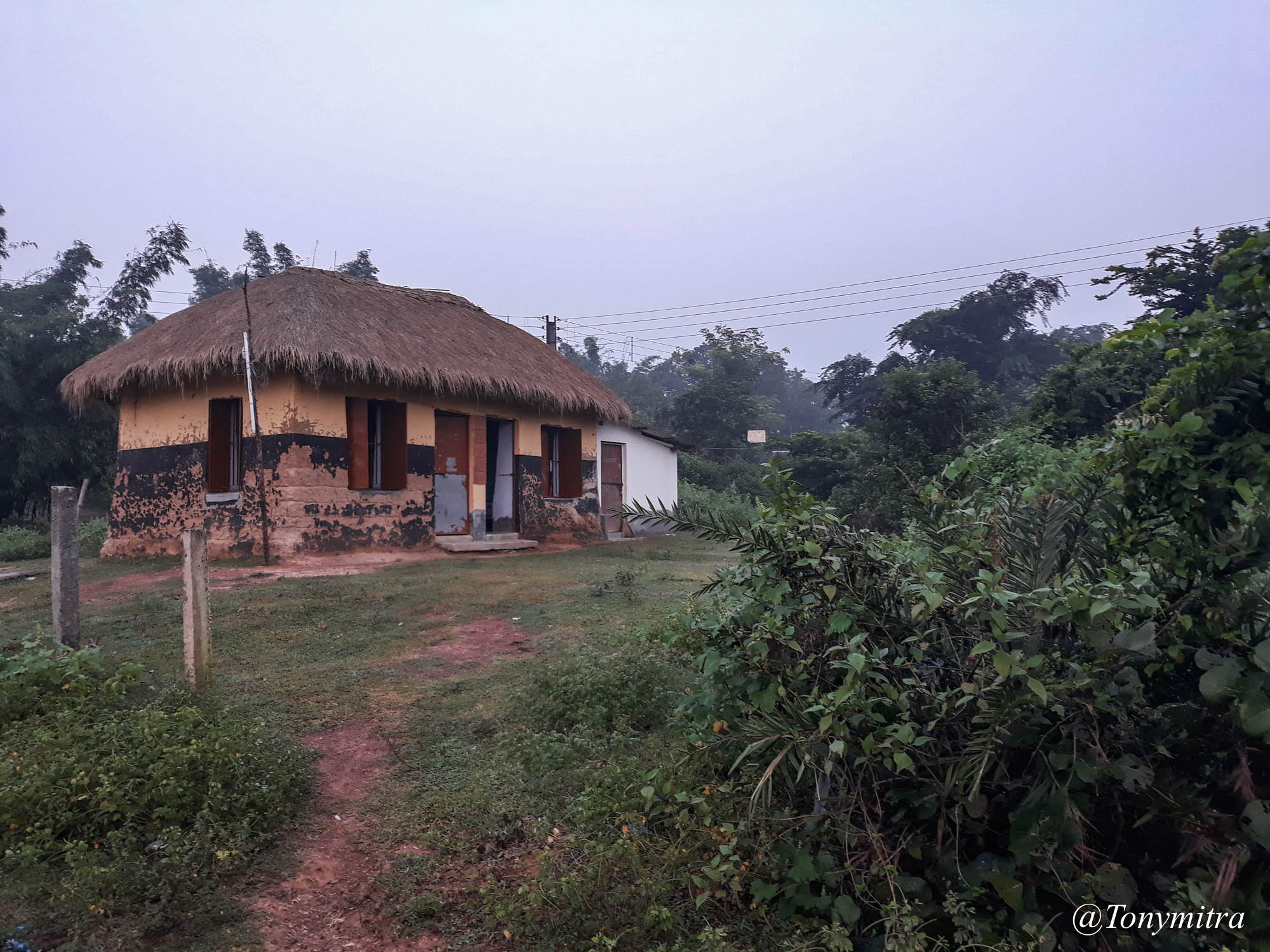
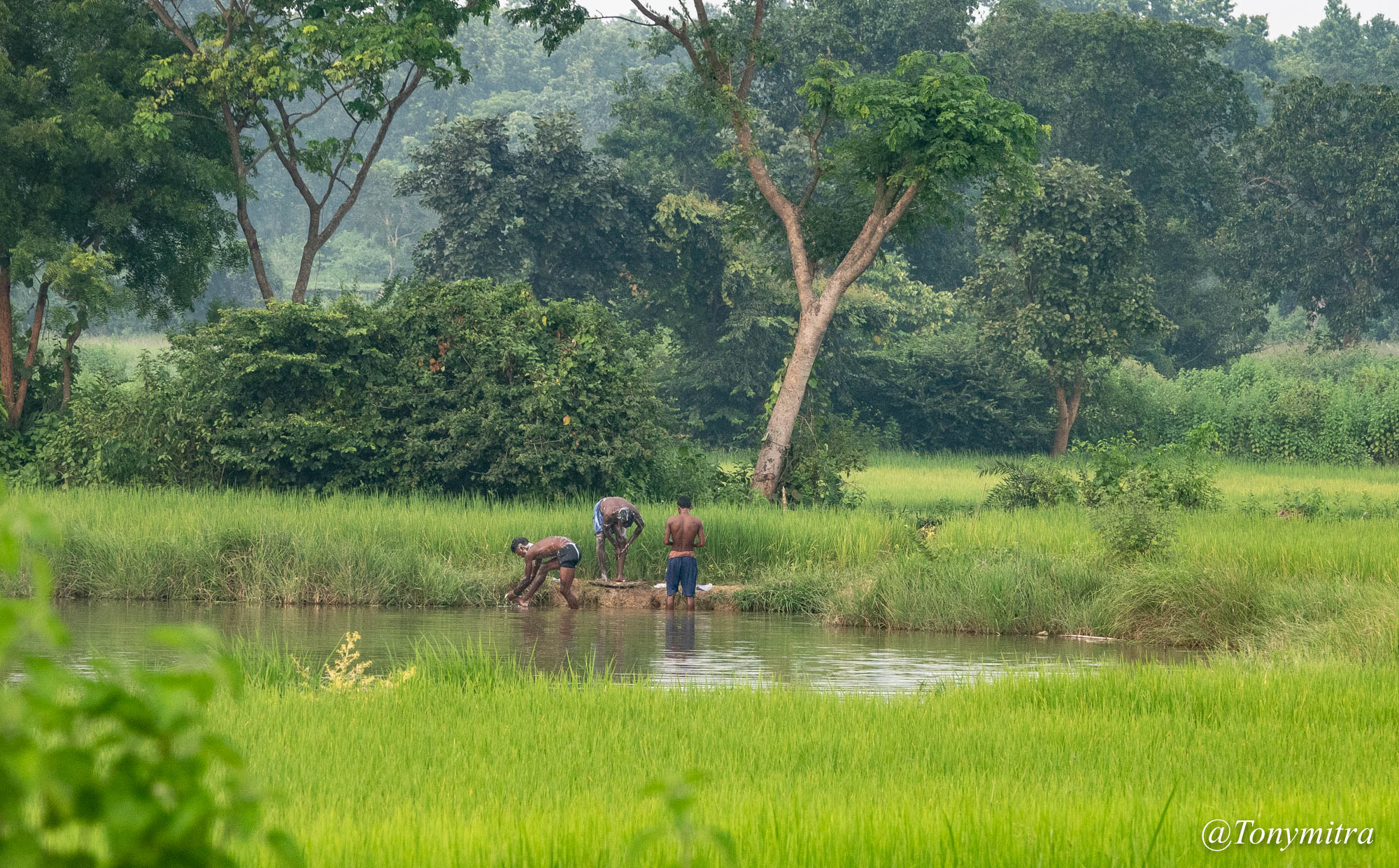 A world where bee are still around, and one can still find a bee eater on a twig.
A world where bee are still around, and one can still find a bee eater on a twig.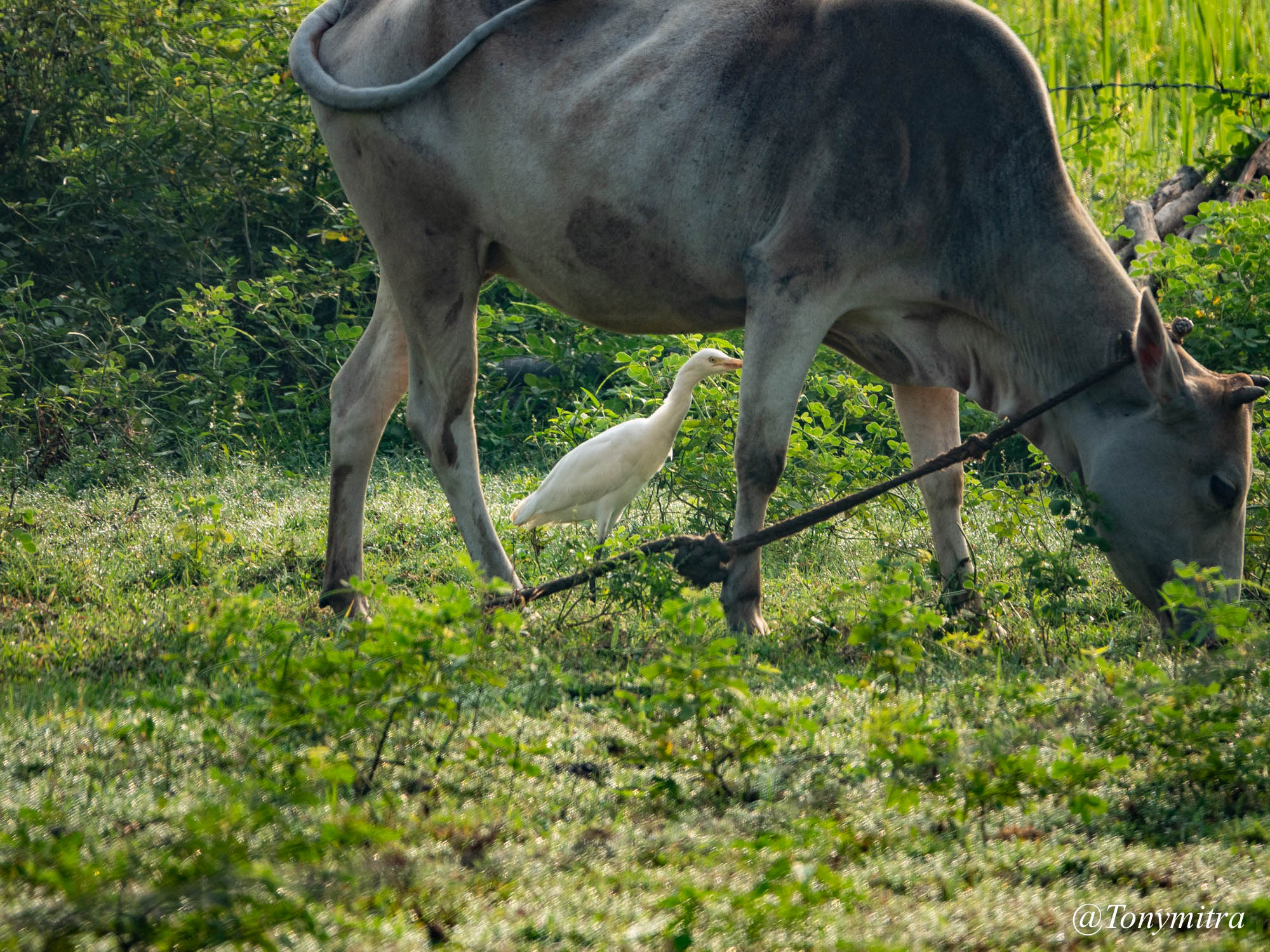
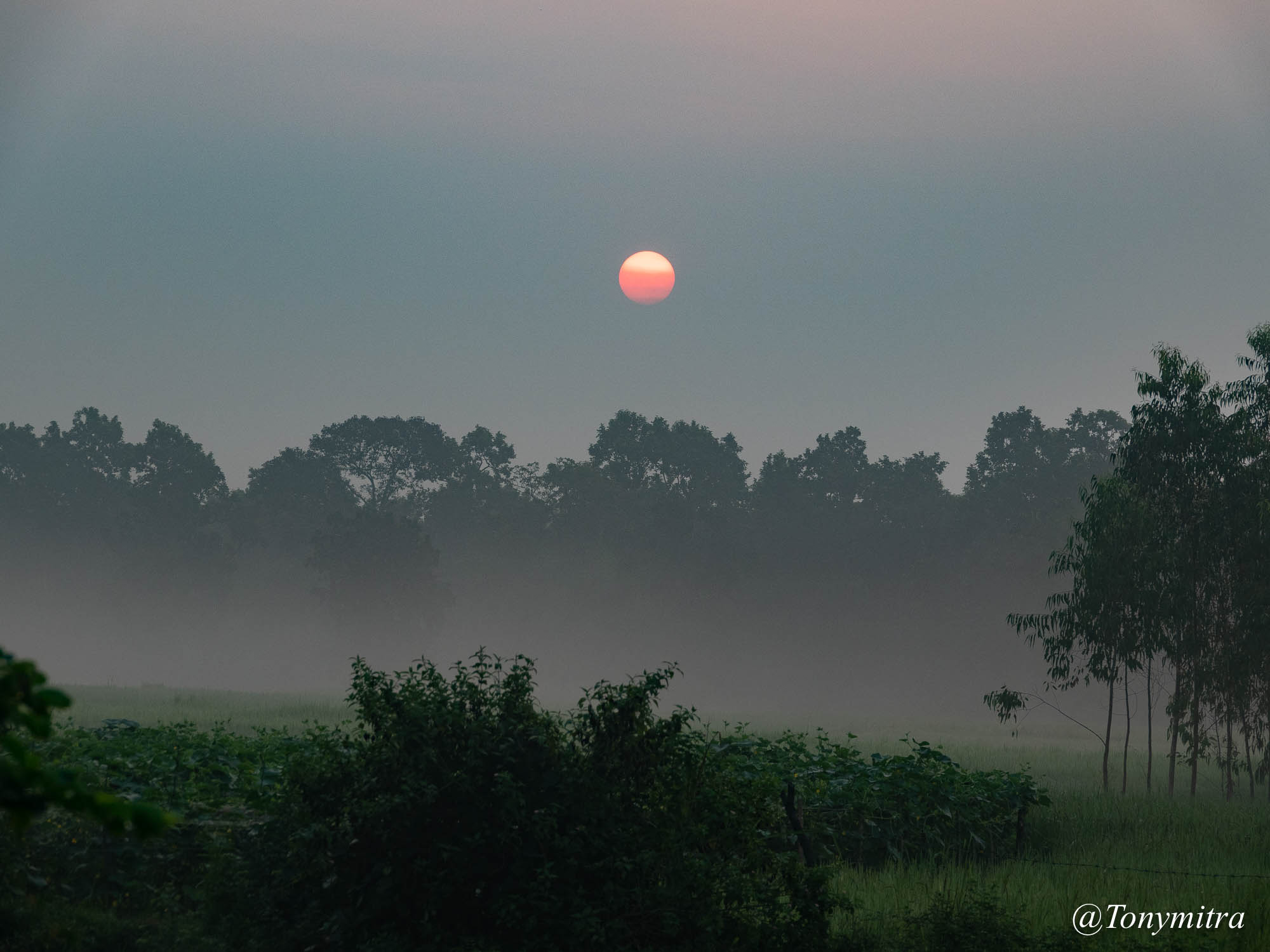 But here I am – part of small pockets of people, being washed away by the human civilizational tsunami, and yet pretending to dream of building a seawall to stop this ecological juggernaut whose root may be in my very genes.
But here I am – part of small pockets of people, being washed away by the human civilizational tsunami, and yet pretending to dream of building a seawall to stop this ecological juggernaut whose root may be in my very genes.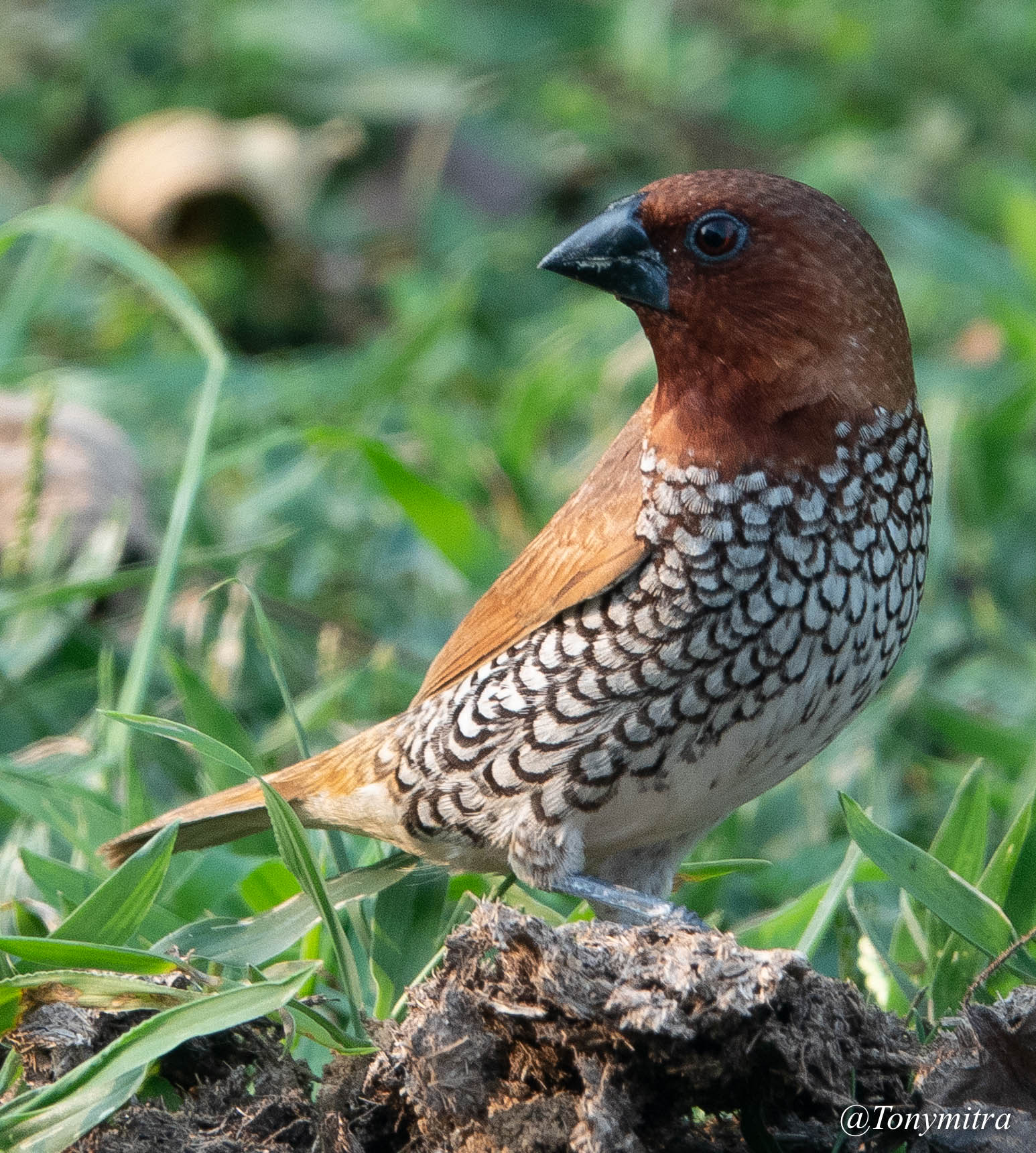 But it would also have room for the scaly breasted munia that landed on a piece of dried cow dung not far from me to allow me a few seconds to take a close up portrait. It would have room not only for the bee-eater in the forest, but also the white mushroom that the termites harvest in their termite hills, the civet cats that roam the land at night, and where domestic chicken range free all through the day, pecking at insects that have not gone extinct yet. There are some miniature chickens that move day and night around the ground, and at nightfall, they need not always return to their pen. They just go to the nearest bush and hunker down. They are often taken there by foxes, but that is there style. I saw a few moving around both in day time and at night under an electric light. I should be writing about all this – not just from this village, but also of other villages I visited, other efforts I saw, in other districts of Bengal.
But it would also have room for the scaly breasted munia that landed on a piece of dried cow dung not far from me to allow me a few seconds to take a close up portrait. It would have room not only for the bee-eater in the forest, but also the white mushroom that the termites harvest in their termite hills, the civet cats that roam the land at night, and where domestic chicken range free all through the day, pecking at insects that have not gone extinct yet. There are some miniature chickens that move day and night around the ground, and at nightfall, they need not always return to their pen. They just go to the nearest bush and hunker down. They are often taken there by foxes, but that is there style. I saw a few moving around both in day time and at night under an electric light. I should be writing about all this – not just from this village, but also of other villages I visited, other efforts I saw, in other districts of Bengal.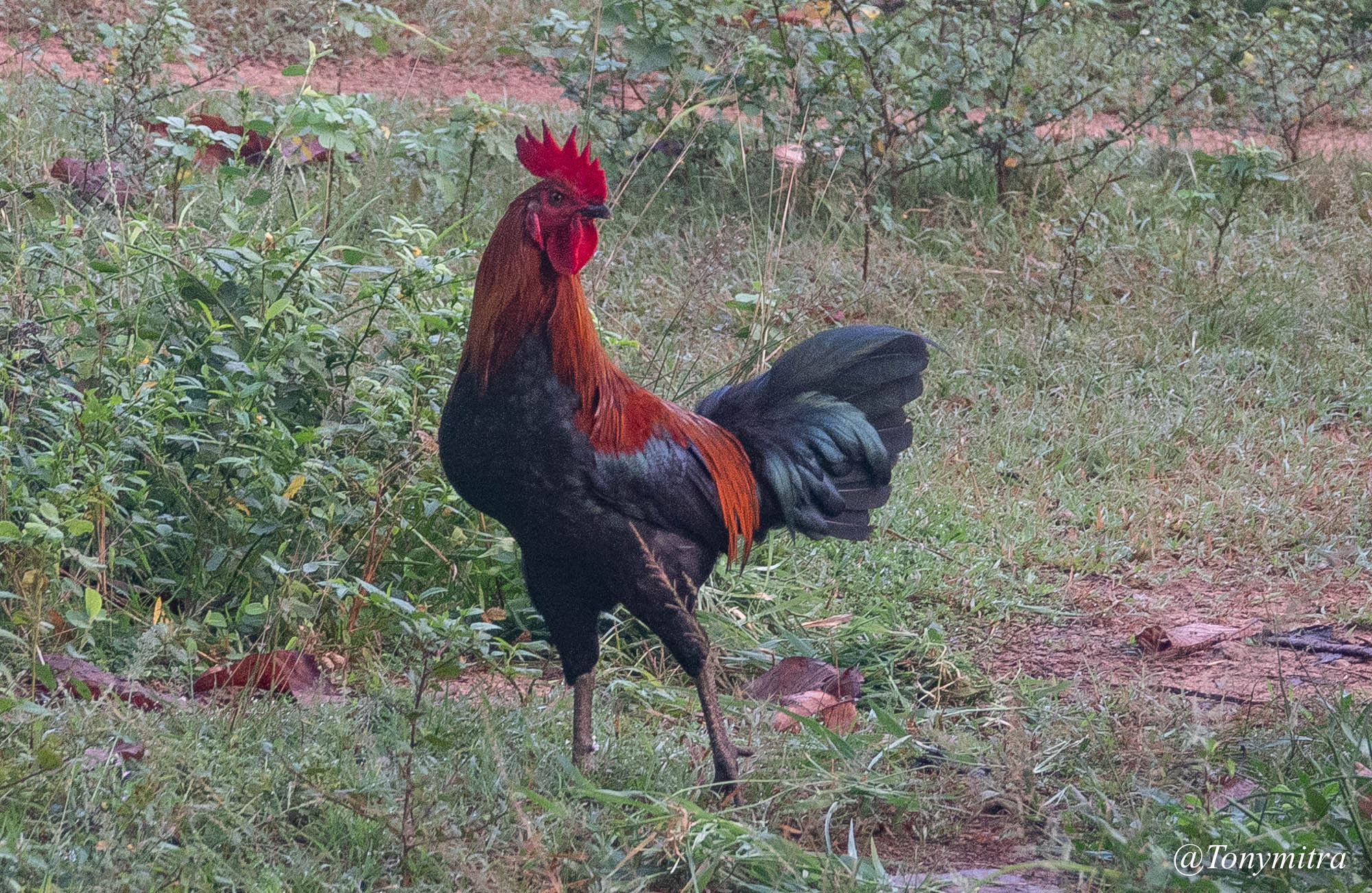
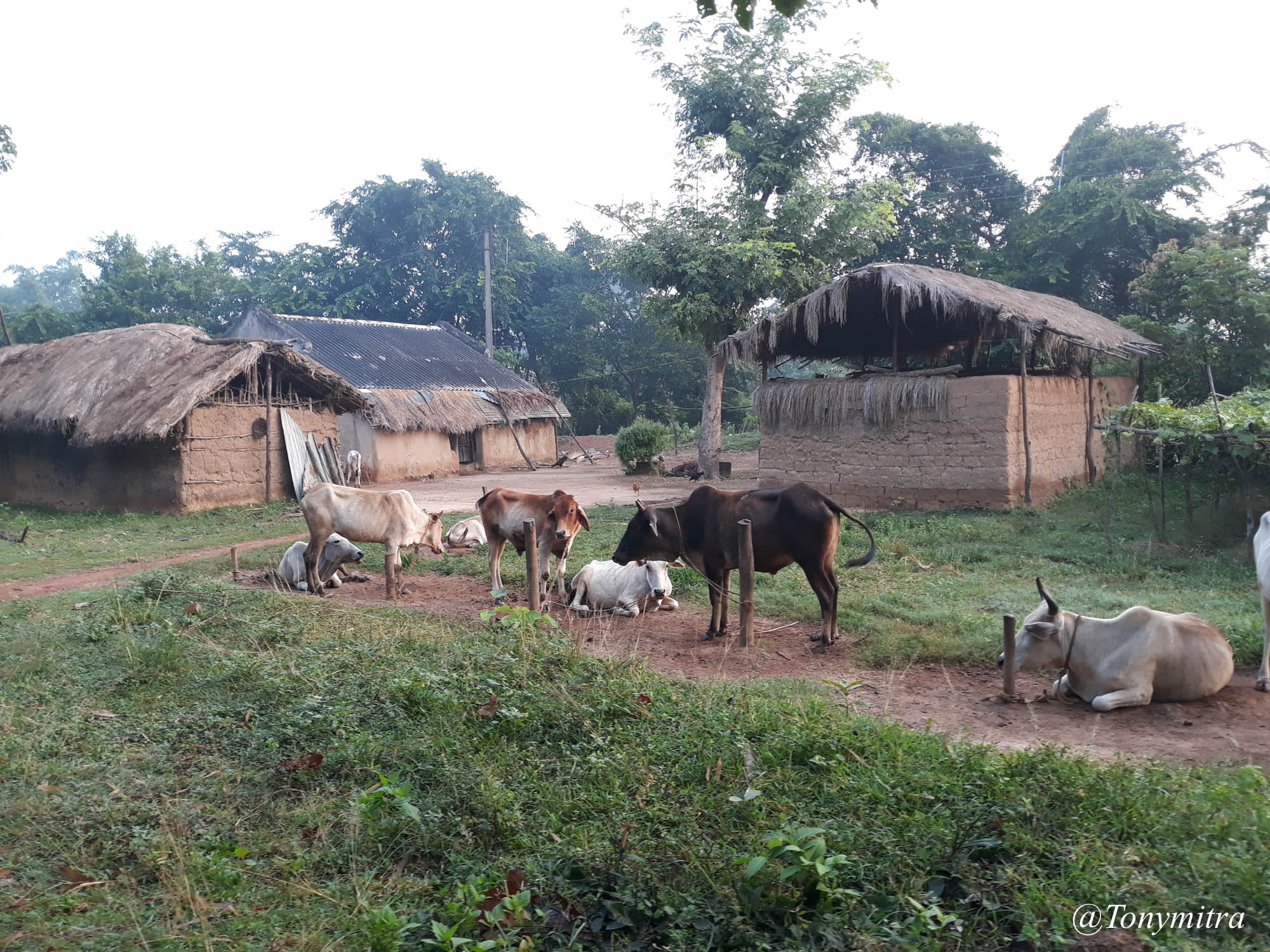
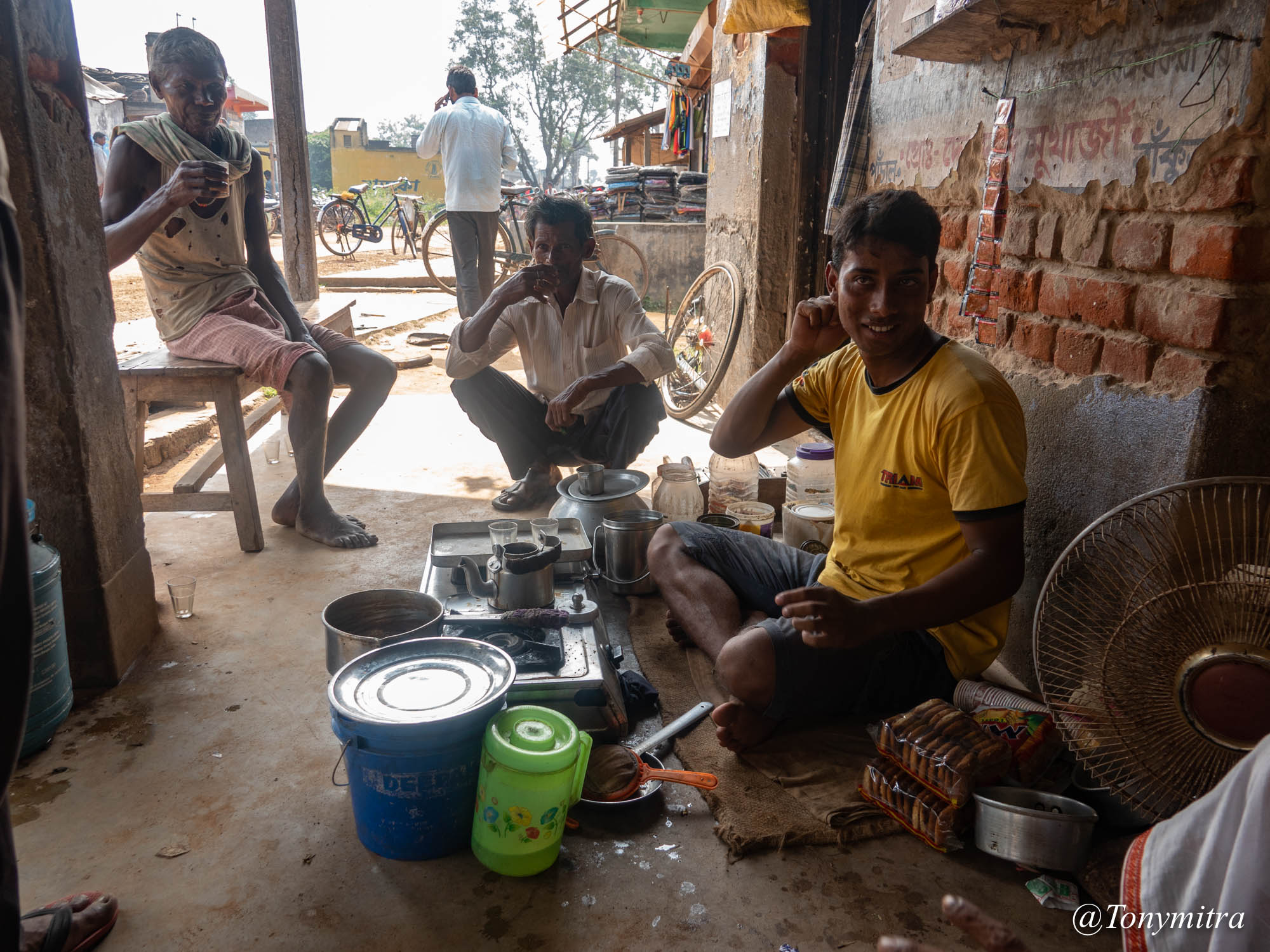
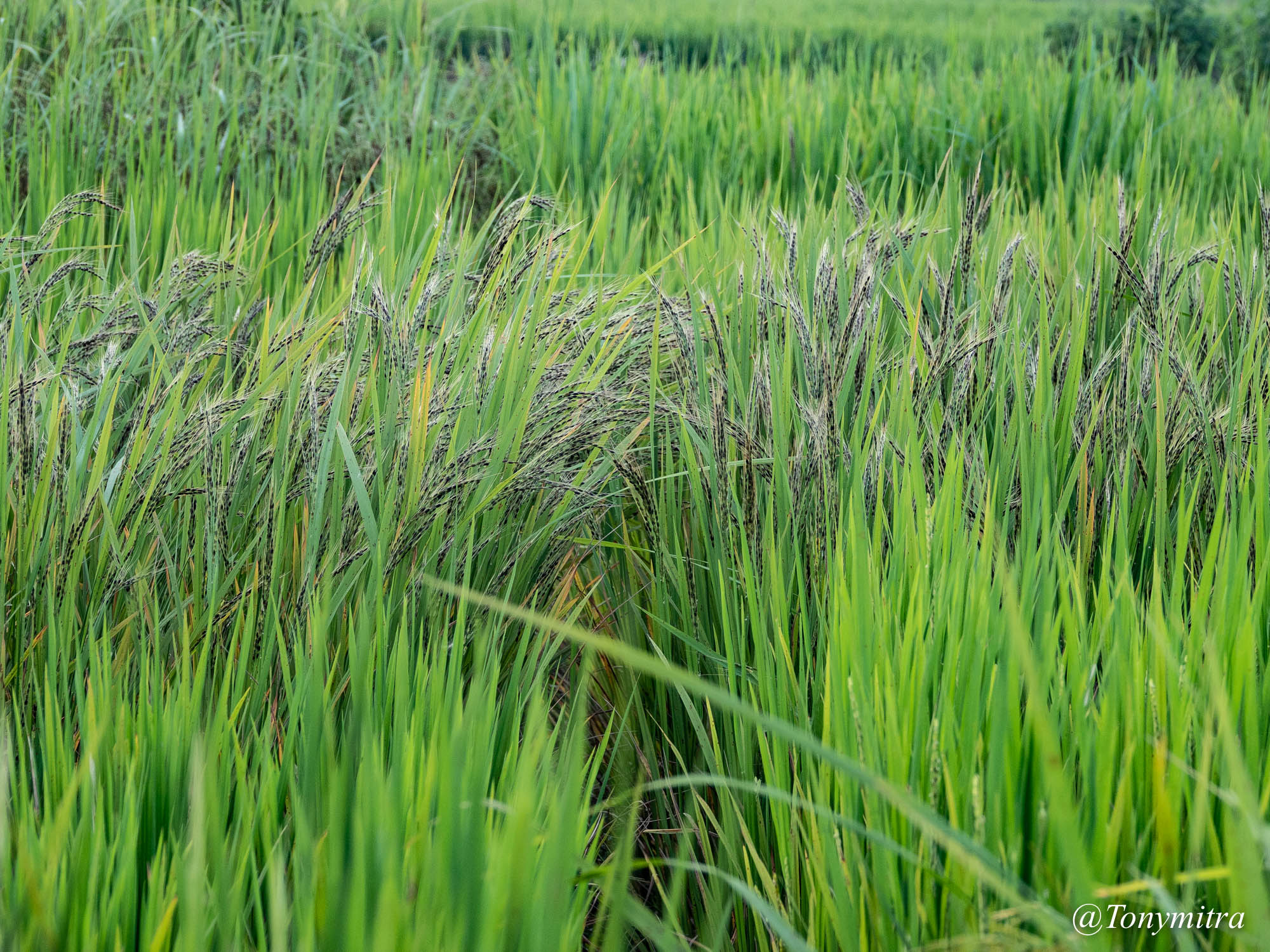
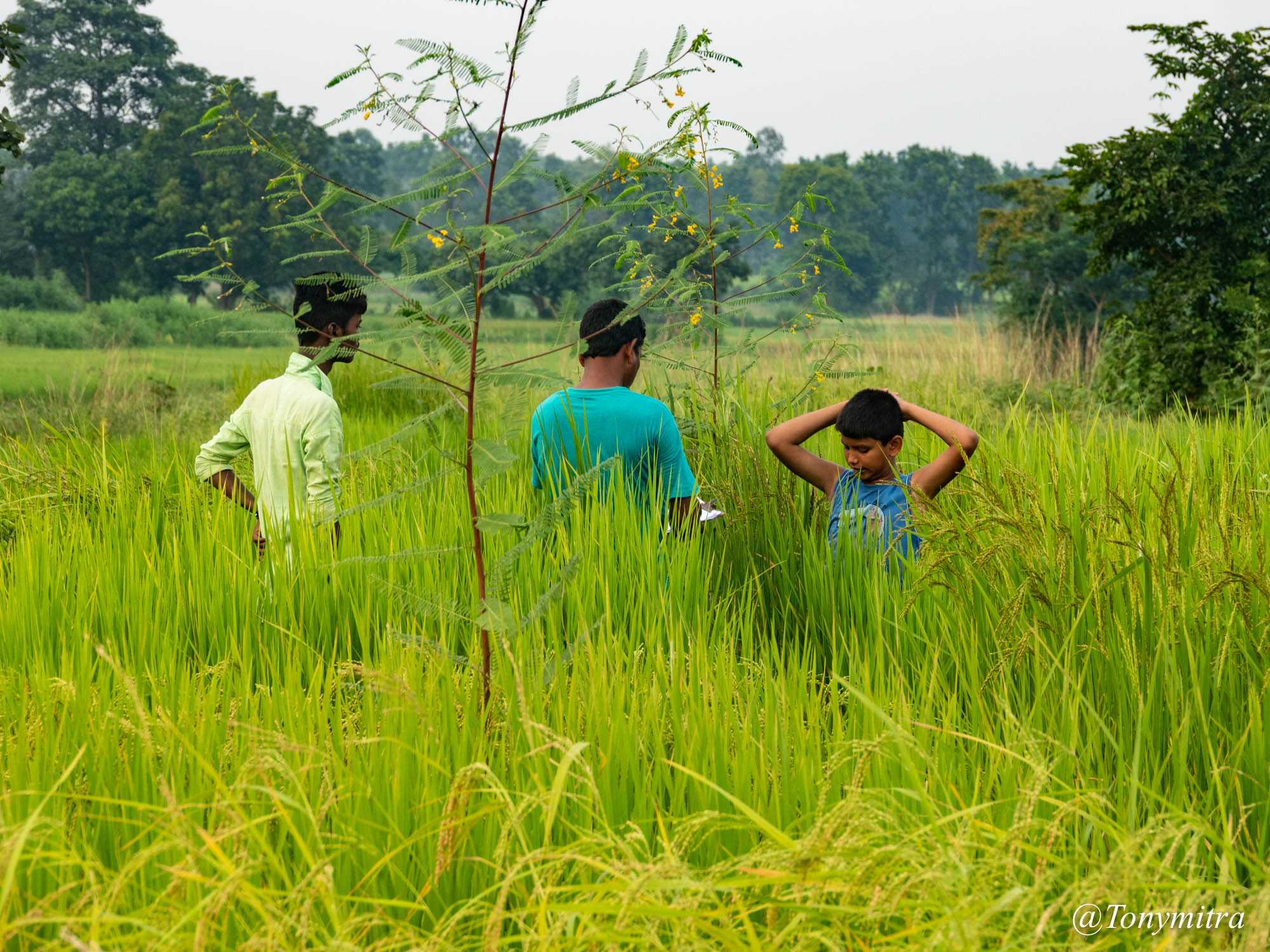
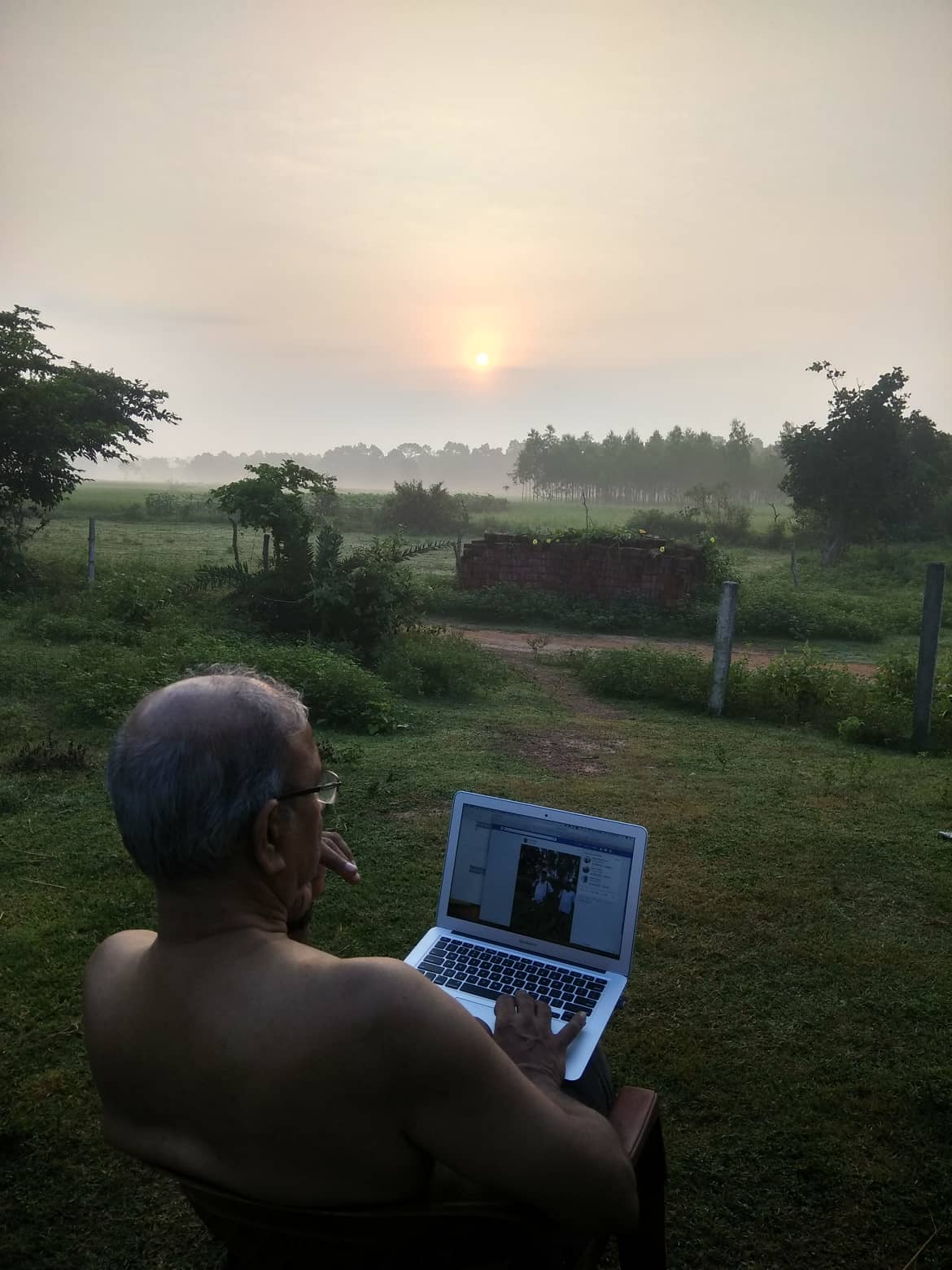
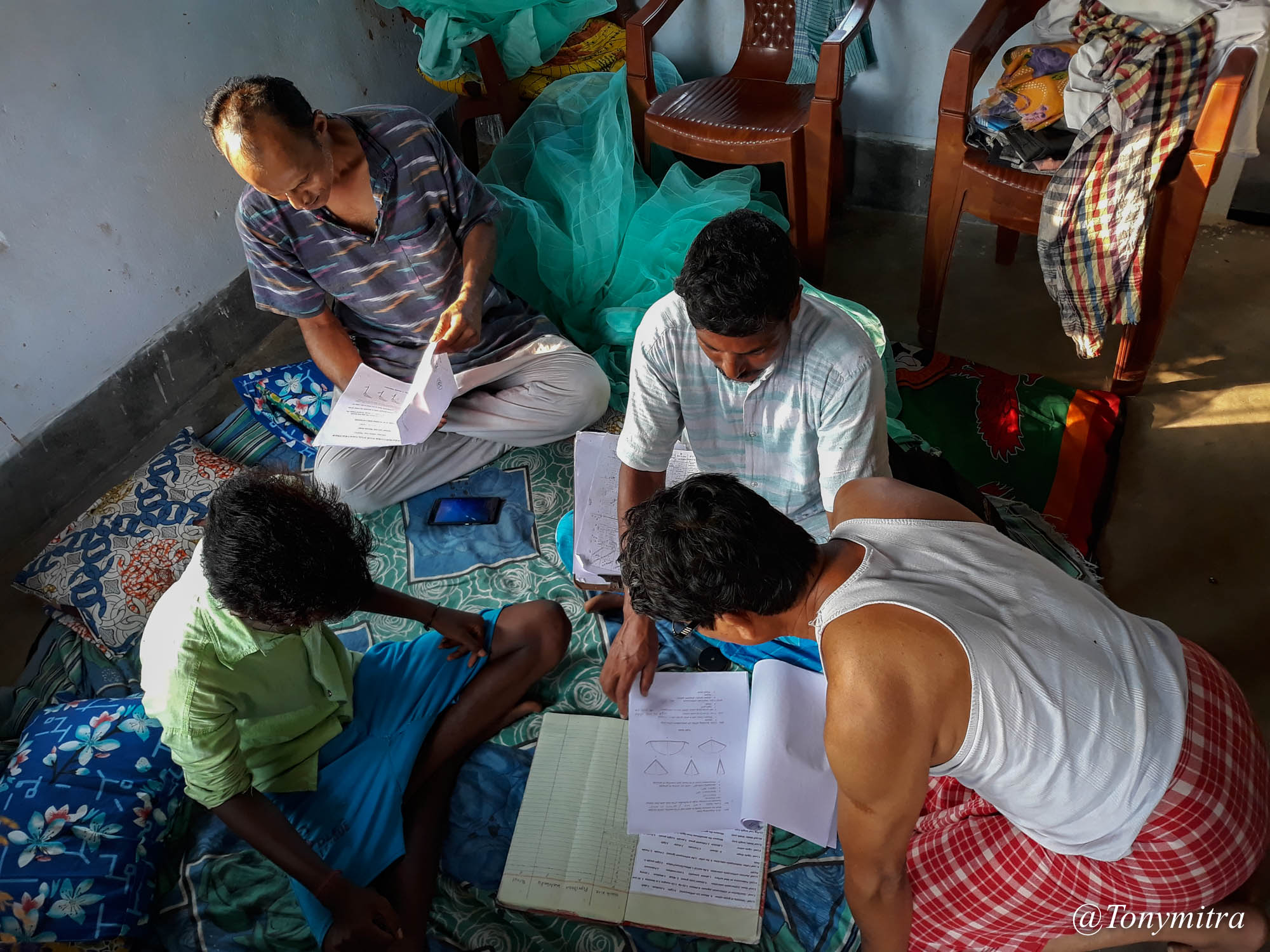
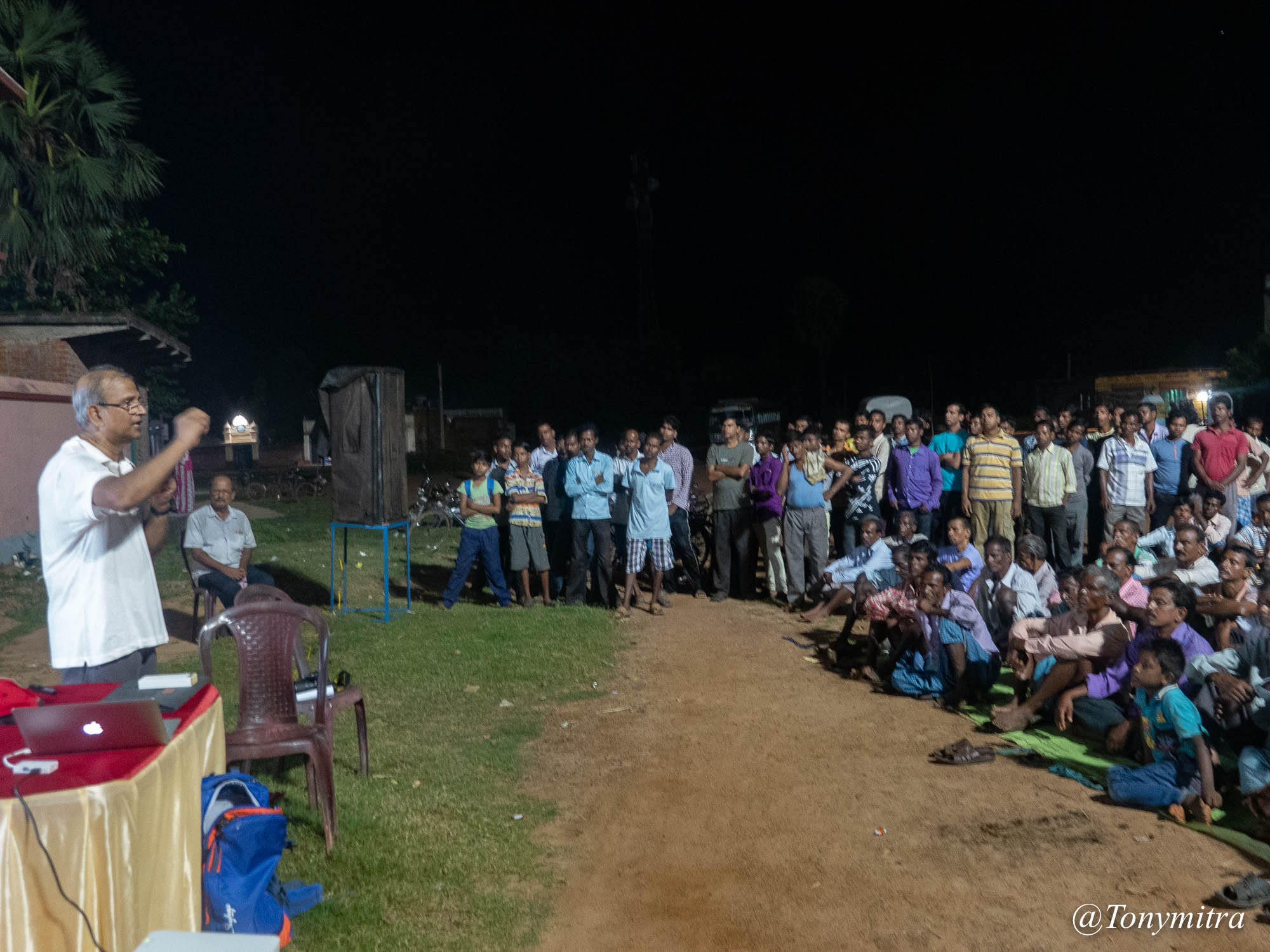
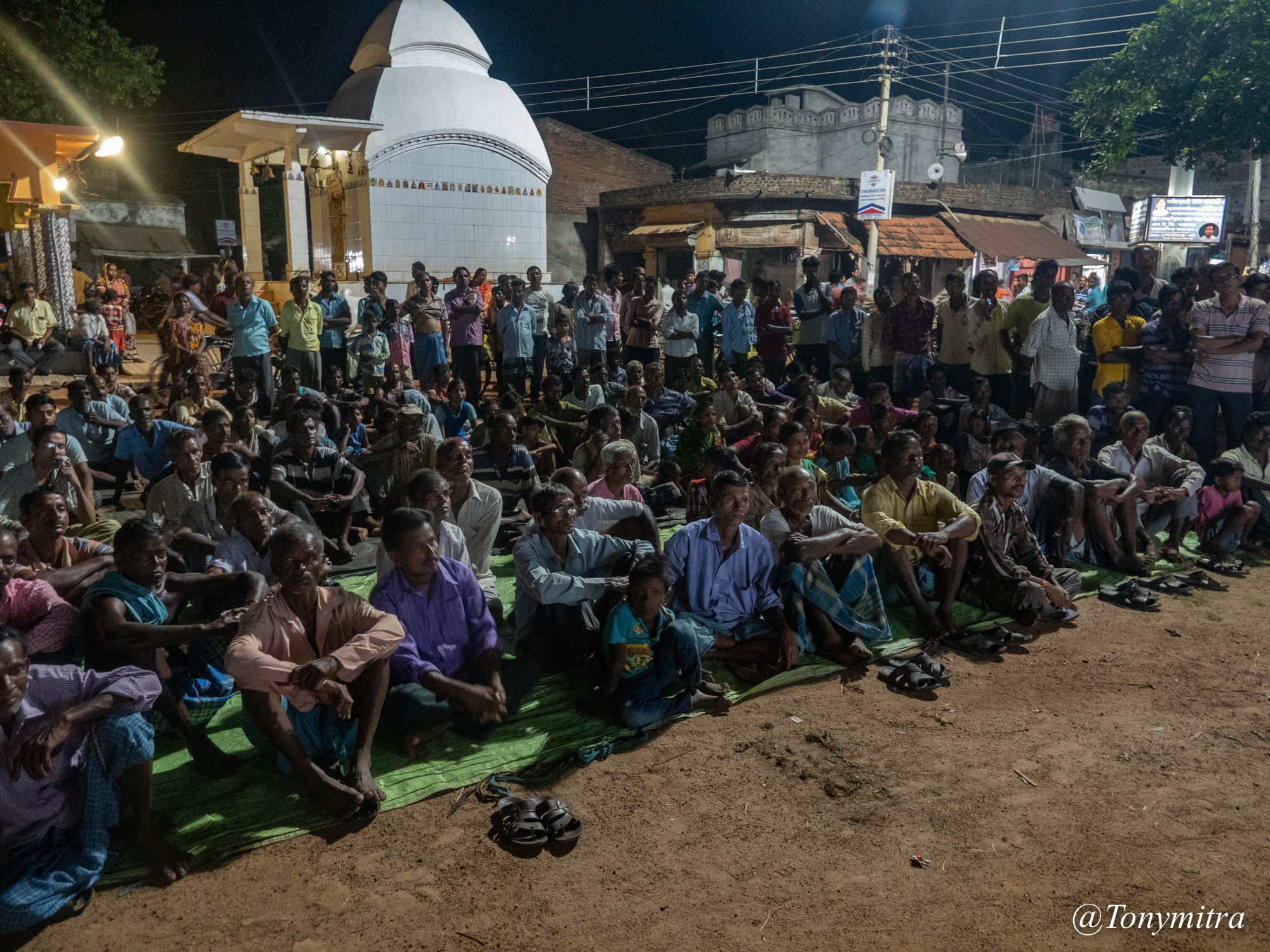
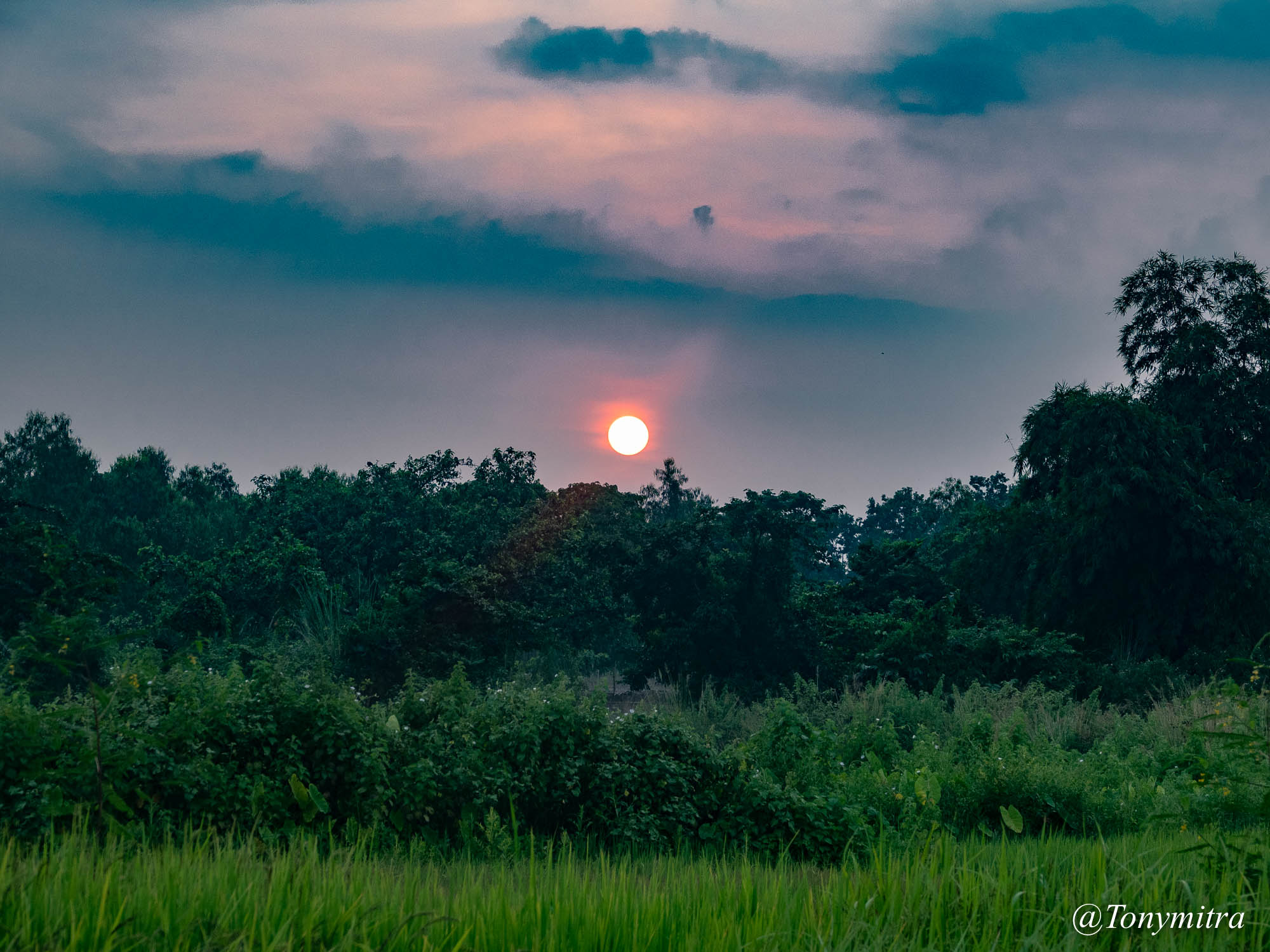
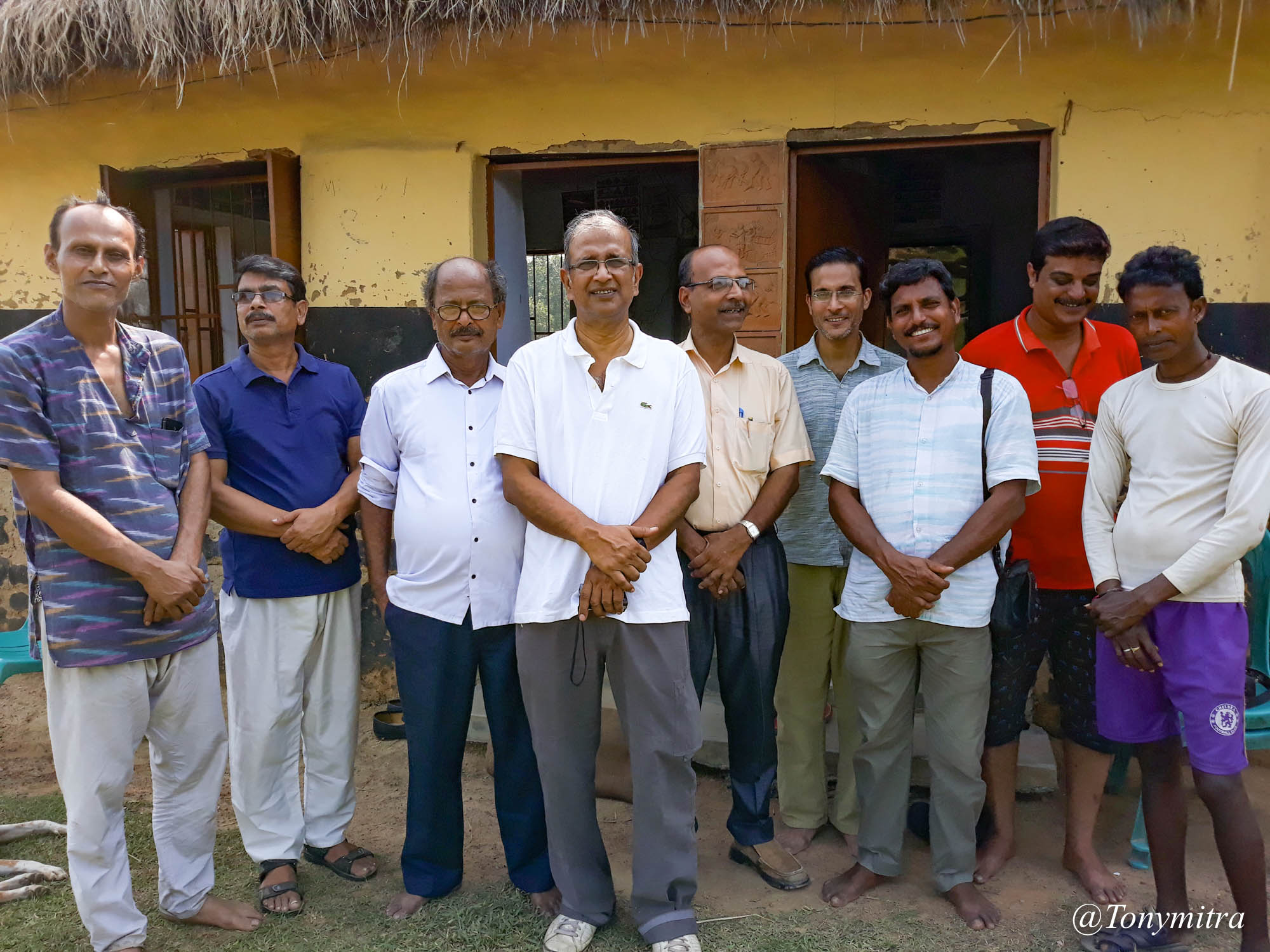 There has to be a story inside a story inside a story – like the Mahabharata – epic of Indian mythology.
There has to be a story inside a story inside a story – like the Mahabharata – epic of Indian mythology.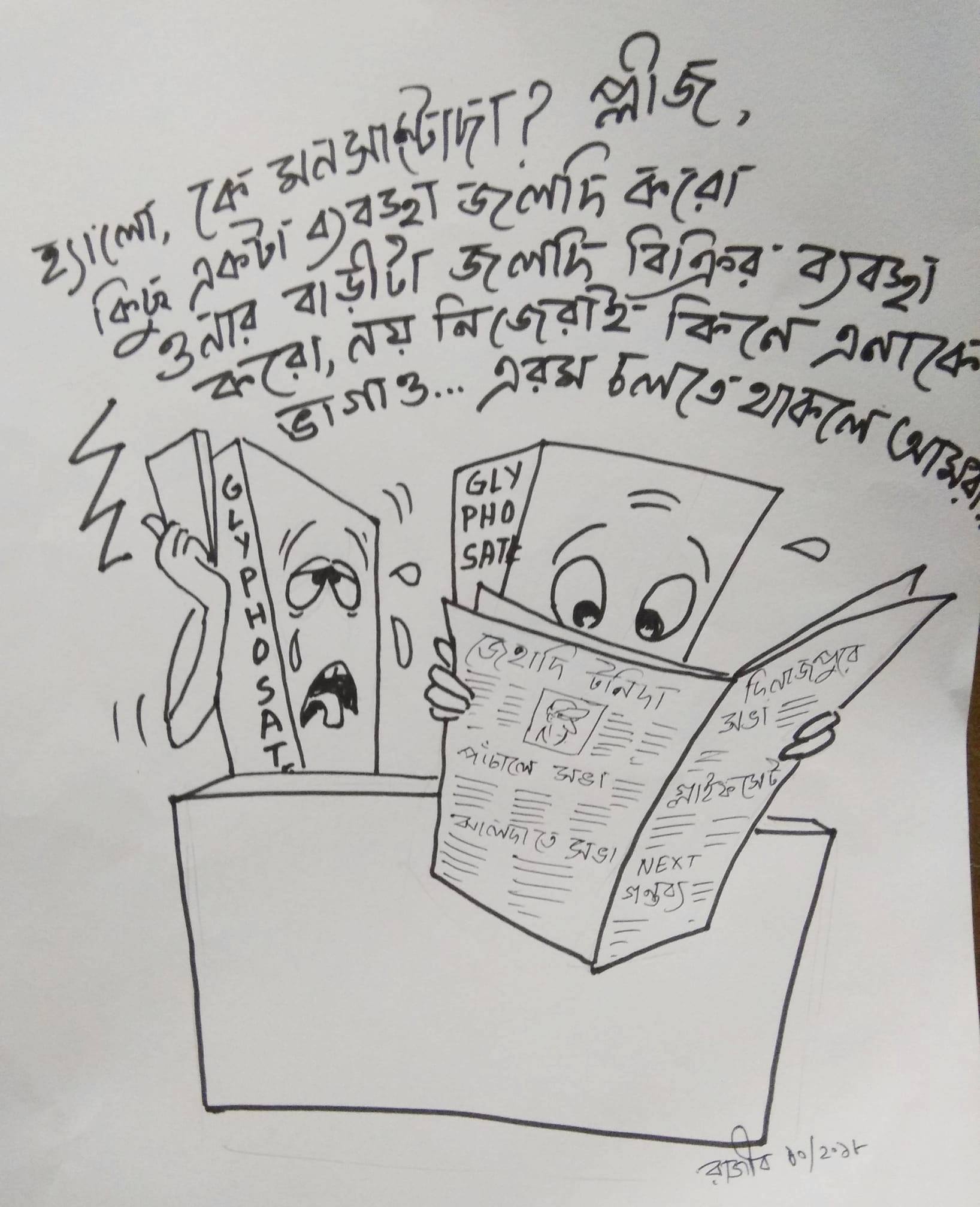
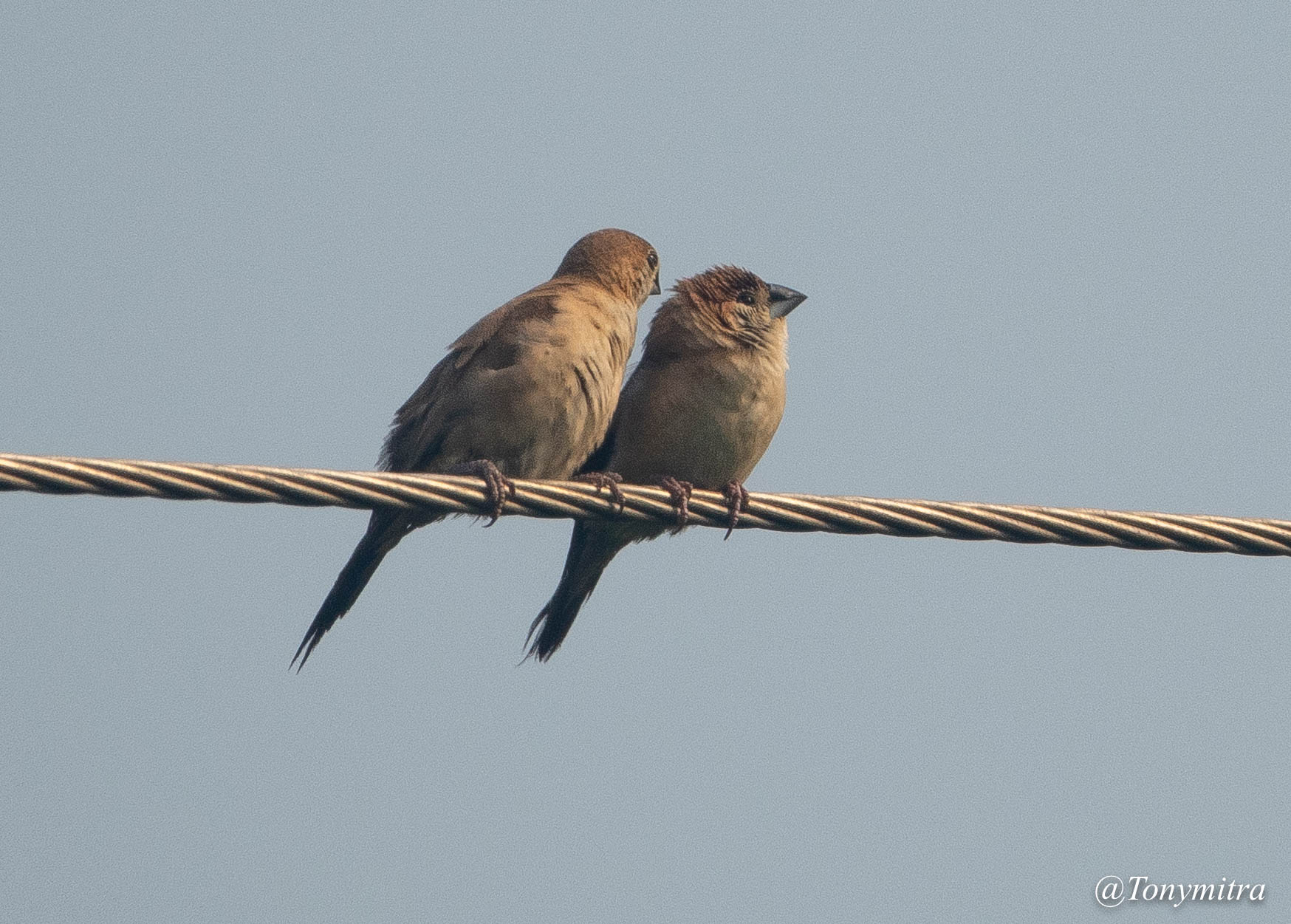
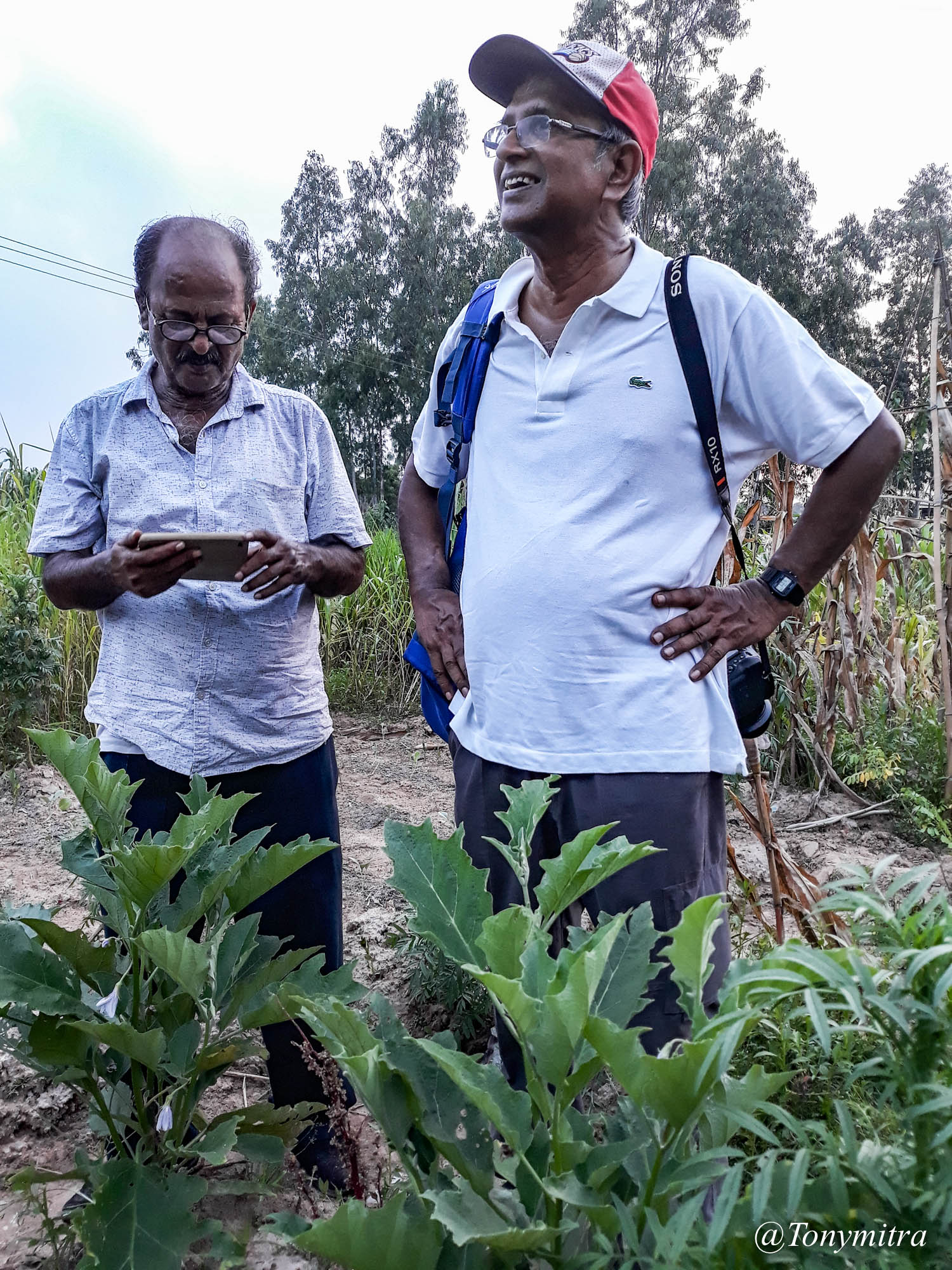
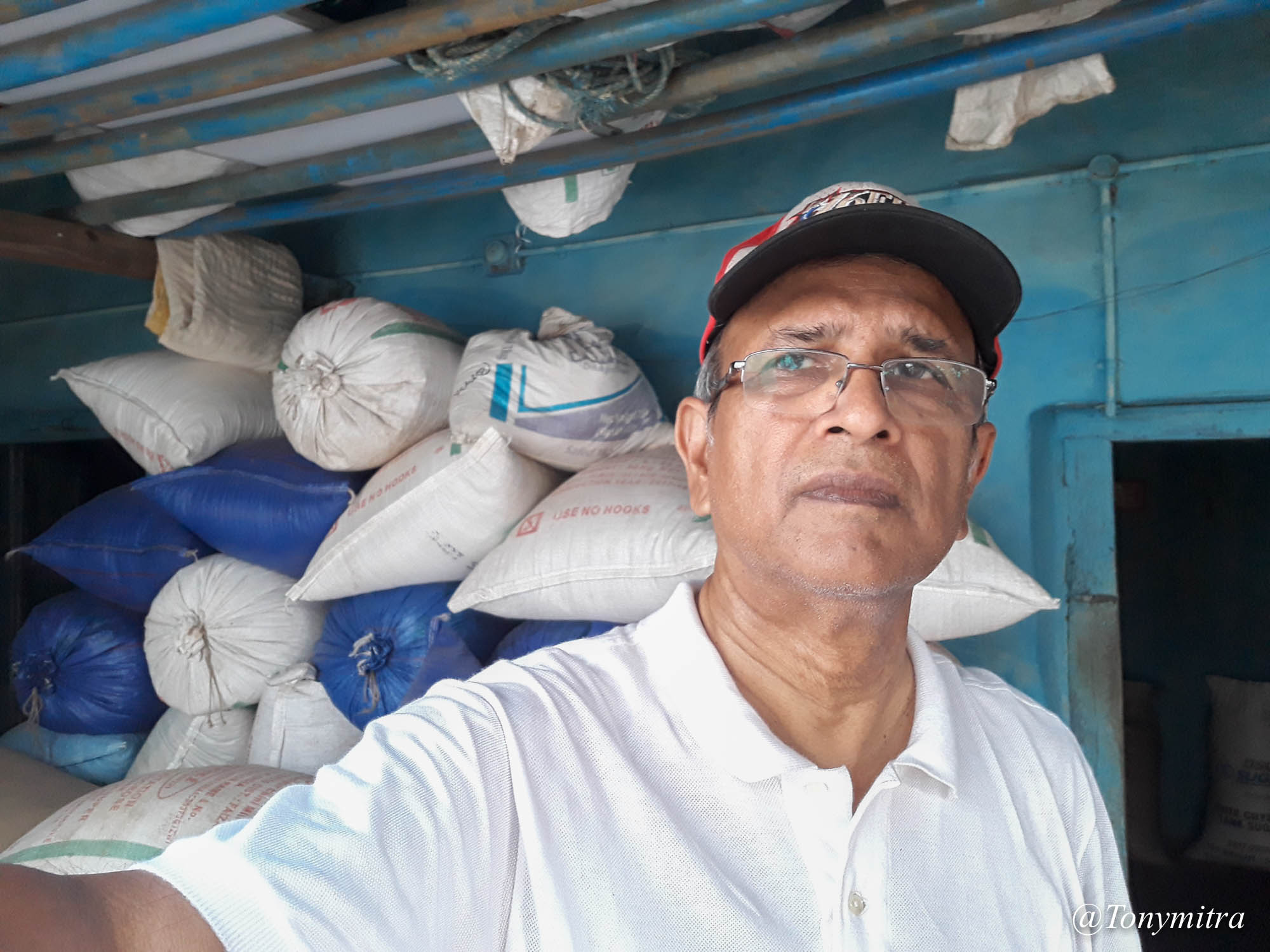
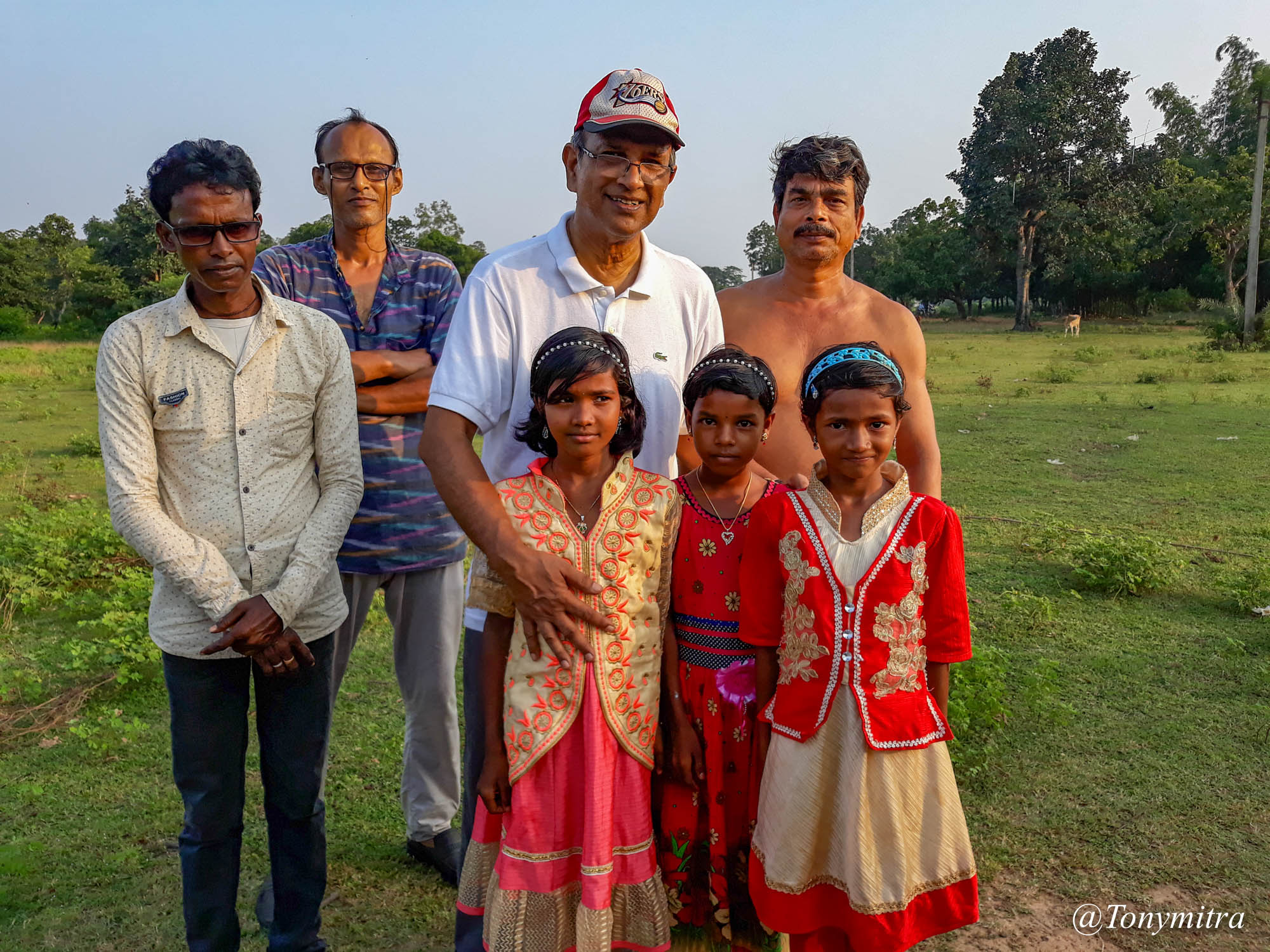
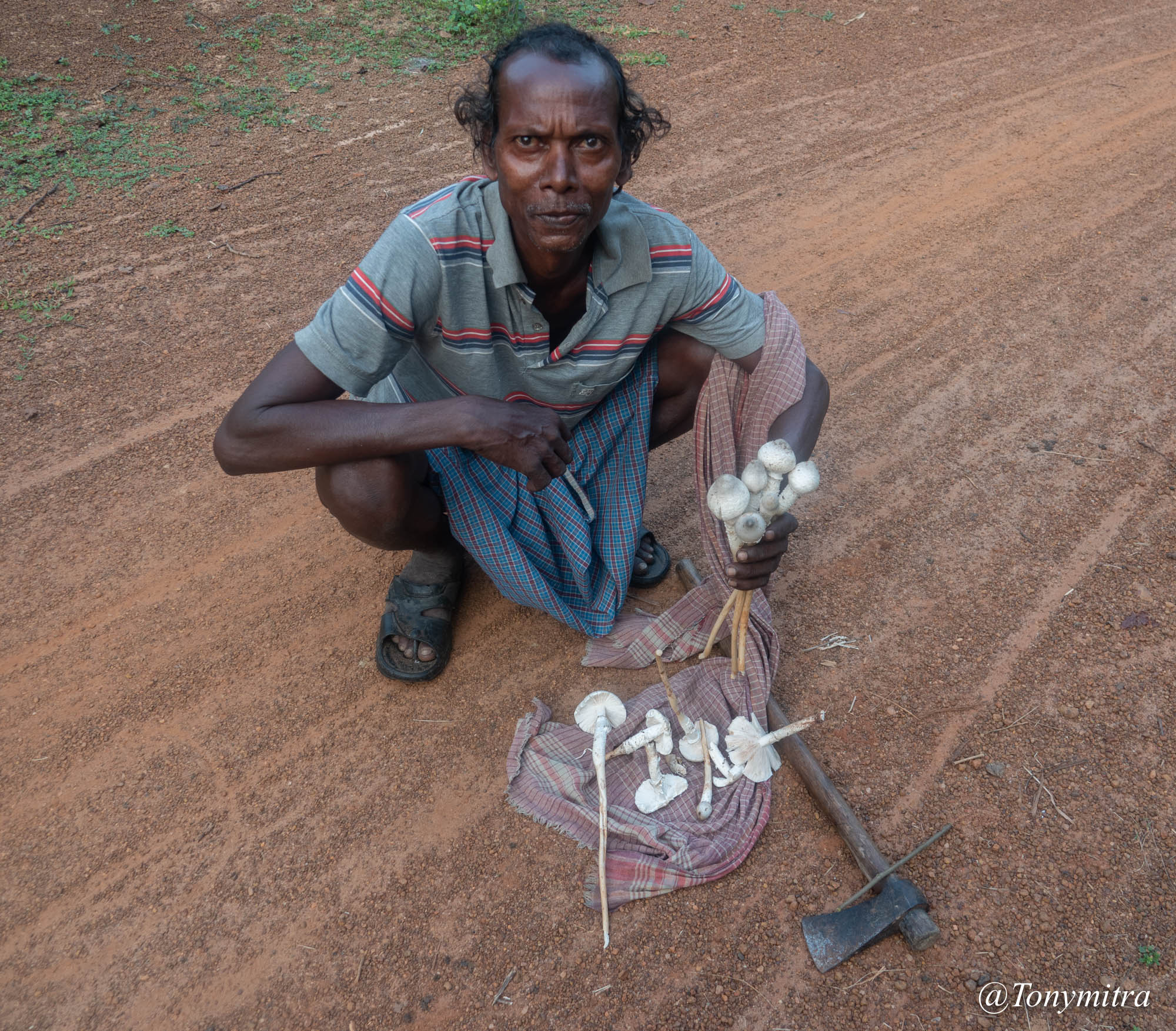 Edible mushrooms collected from the forest by villagers of Panchal area, Bankura. The spores of these mushroom fungus are collected, stored,, cultivated and harvested by white ants (termites). These are kept inside their anthills in off-season. The on-season starts now, and these spores sprout, grow on stalks with white mushroom heads sticking out. Knowledgeable villagers go looking for them at the right time – around now, cut the stalks and bring them home.
Edible mushrooms collected from the forest by villagers of Panchal area, Bankura. The spores of these mushroom fungus are collected, stored,, cultivated and harvested by white ants (termites). These are kept inside their anthills in off-season. The on-season starts now, and these spores sprout, grow on stalks with white mushroom heads sticking out. Knowledgeable villagers go looking for them at the right time – around now, cut the stalks and bring them home.